Best Small Sailboats for Beginners
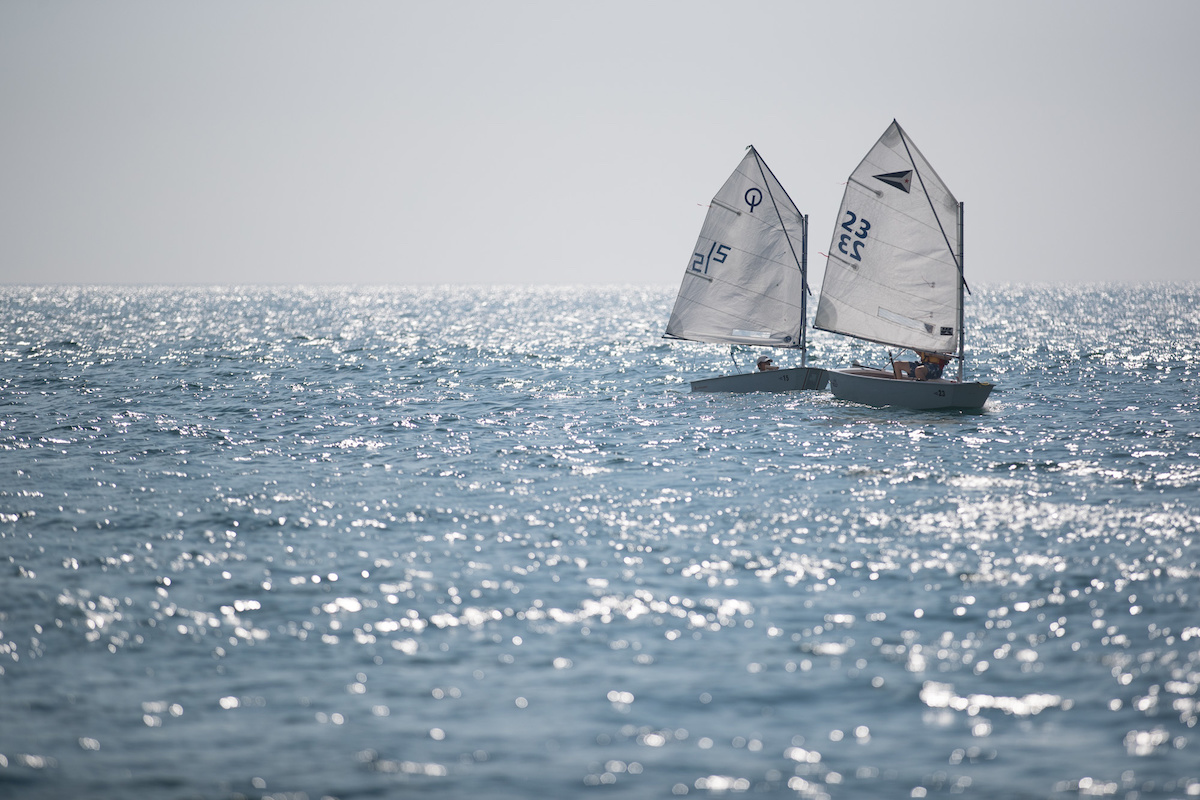
There are a number of classic trainers used by yacht club youth programs as well as techie new designs. Without mentioning specific models and brands, it’s difficult to outline which small boats are best but here are things to look for in good teaching boats.
Some of the best small sailboats for beginners include:
- Boats with tillers steering
- Boats with no winches
- Sailing dinghies
- Small sloops
- Small catamarans
- Rotomolded boats
- Trailerable sailboats
Explore All Sailboat Types

Boats with Tiller Steering
Steering by tiller (rather than a wheel) can make a difference when learning. Tillers are directly connected to the rudder that manages the boat’s direction. Tillers provide quick feedback about the strength and direction of the wind as well as the boat’s turning agility at various speeds.
Boats with No Winches
Boats that require no winches to manage the sheets and halyards are best for youngsters and new sailors. These boats usually don’t experience the same forces on the sails and rigging as larger boats, which can be a handful when the wind starts to blow. Winches are usually replaced with cam or jam cleats, which are easy to use.
Sailing Dinghies
Sailing dinghies are usually rigged with one mast and one sail and offer kids and new sailors simplicity so it’s easy to learn the ropes. Less overwhelming than boats with two sails, dinghies are light and responsive. They also have a shallow draft due to side or centerboards so they can be sailed just about anywhere. In some cases (whether from a wind gust or sudden crew weight shift) sailing dinghies can capsize so students should wear lifejackets and know how to swim. Sailing dinghies are usually sailed by one or two people.
Small Sloops
Small sloops with a mast that carries head and mainsails are the next step so students learn how sails work together. Headsails can be hanked on or attached to a small roller furler. These boats may have some or no winches, which also makes them easier to maintain. These boats can usually be sailed with one to four people.
Some sloops can scale up, providing a more challenging experience for sailors as they develop skills. Certain models can carry spinnakers and larger headsails to teach sail combinations and new sail trim techniques. Others offer the ability to hike out (shift crew weight well outboard to balance the boat against the wind pressure in the sails). This kind of sailing is more advanced.
Small Catamarans
Small catamarans provide extra stability for those who may be nervous about capsizing or aren’t fond of heeling (tipping while sailing). With two hulls providing a wide and stable base, catamarans area ideal for beginners, which may be why they’re often used by resorts as their beach sailing tourist boats. Rigged with one or two sails, small cats are tiller steered and usually have a trampoline that the students sit on and sail.
Rotomolded Boats
Small rotomolded boats are very forgiving due to their durable construction. Unlike fiberglass or wooden boats, rotomolded (a type of plastic construction technique) trainers can bounce off docks or other boats and cause or sustain little damage. Dinghies and catamarans can both be made via rotomolding.
Trailerable Sailboats
Finally, small sailboats that can be trailered to different locations add variety and that makes learning fun. Students can learn to sail in different wind and water conditions and enjoy their boats differently on vacation or with new friends.
Learning to sail involves all the senses and requires a level head and lots of practice and although it can be learned in many ways, the best way is to start with a boat that’s small, simple, safe and durable.
Read Next: Small Boats: What Are My Options?
You Might Also Like:
- Sailing Basics: 10 Nautical & Sailing Terms to Know
- Learning the Basics of Sailing
- Why Sailing?
- Find the Right Boat for Your Lifestyle
- Explore Sailboat Brands
Join Our Newsletter!
Get community news, buying bargains, and how-to guides at your fingertips.

Home » Blog » Buy a boat » 5 best small sailboats for sailing around the world
5 best small sailboats for sailing around the world
By Author Fiona McGlynn
Posted on Last updated: April 19, 2023

A small sailboat can take you big places
Small sailboats are the ticket to going cruising NOW — not when you retire, save up enough money, or find the “perfect” bluewater cruising boat. In fact, it’s the first principle in Lin and Larry Pardey’s cruising philosophy: “Go small, go simple, go now.”
Small yachts can be affordable, simple, and seaworthy . However, you won’t see many of them in today’s cruising grounds. In three years and 13,000 nautical miles of bluewater cruising, I could count the number of under 30-foot sailboats I’ve seen on one hand (all of them were skippered by people in their 20s and 30s).
Today’s anchorages are full of 40, 50, and 60-foot-plus ocean sailboats, but that’s not to say you can’t sail the world in a small sailboat. Just look at Alessandro di Benedetto who in 2010 broke the record for the smallest boat to sail around the world non-stop in his 21-foot Mini 6.5 .
So long as you don’t mind forgoing a few comforts, you can sail around the world on a small budget .

What makes a good blue water sailboat
While you might not think a small sailboat is up to the task of going long distances, some of the best bluewater sailboats are under 40 feet.
However, if you’re thinking about buying a boat for offshore cruising, there are a few things to know about what makes a small boat offshore capable .
Smaller equals slower
Don’t expect to be sailing at high speeds in a pocket cruiser. Smaller displacement monohulls are always going to be slower than larger displacement monohulls (see the video below to learn why smaller boats are slower). Therefore a smaller cruiser is going to take longer on a given passage, making them more vulnerable to changes in weather.
A few feet can make a big difference over a week-long passage. On the last leg of our Pacific Ocean crossing, our 35-foot sailboat narrowly avoid a storm that our buddy boat, a 28-foot sailboat, couldn’t. Our friend was only a knot slower but it meant he had to heave to for a miserable three days.

Small but sturdy
If a pocket cruiser encounters bad weather, they will be less able to outrun or avoid it. For this reason, many of the blue water sailboats in this list are heavily built and designed to take a beating.
Yacht design has changed dramatically over the last 50 years. Today, new boats are designed to be light and fast. The small sailboats in our list are 30-plus year-old designs and were built in a time when weather forecasts were less accurate and harder to come by.
Back in the day, boat were constructed with thicker fiberglass hulls than you see in modern builds. Rigs, keels, rudders, hulls and decks – everything about these small cruising sailboats was designed to stand up to strong winds and big waves. Some of the boats in this post have skeg-hung rudders and most of them are full keel boats.
The pros and cons of pocket cruiser sailboats
Pocket cruiser sailboats present certain advantages and disadvantages.
More affordable
Their smaller size makes them affordable bluewater sailboats. You can often find great deals on pocket cruisers and sometimes you can even get them for free.
You’ll also save money on retrofits and repairs because small cruising sailboats need smaller boat parts (which cost a lot less) . For example, you can get away with smaller sails, ground tackle, winches, and lighter lines than on a bigger boat.
Moorage, haul-outs, and marine services are often billed by foot of boat length . A small sailboat makes traveling the world , far more affordable!
When something major breaks (like an engine) it will be less costly to repair or replace than it would be on a bigger boat.

Less time consuming
Smaller boats tend to have simpler systems which means you’ll spend less time fixing and paying to maintain those systems. For example, most small yachts don’t have showers, watermakers , hot water, and electric anchor windlasses.
On the flip side, you’ll spend more time collecting water (the low-tech way) . On a small sailboat, this means bucket baths, catching fresh water in your sails, and hand-bombing your anchor. Though less convenient, this simplicity can save you years of preparation and saving to go sailing.
Oh, and did I mention that you’ll become a complete water meiser? Conserving water aboard becomes pretty important when you have to blue-jug every drop of it from town back to your boat.
Easier to sail
Lastly, smaller boats can be physically easier to sail , just think of the difference between raising a sail on a 25-foot boat versus a 50-foot boat! You can more easily single-hand or short-hand a small sailboat. For that reason, some of the best solo blue water sailboats are quite petite.
As mentioned above small boats are slow boats and will arrive in port, sometimes days (and even weeks) behind their faster counterparts on long offshore crossings.
Consider this scenario: two boats crossed the Atlantic on a 4,000 nautical mile route. The small boat averaged four miles an hour, while the big boat averaged seven miles an hour. If both started at the same time, the small boat will have completed the crossing two weeks after the larger sailboat!
Less spacious
Living on a boat can be challenging — living on a small sailboat, even more so! Small cruising boats don’t provide much in the way of living space and creature comforts.
Not only will you have to downsize when you move onto a boat you’ll also have to get pretty creative when it comes to boat storage.
It also makes it more difficult to accommodate crew for long periods which means there are fewer people to share work and night shifts.
If you plan on sailing with your dog , it might put a small boat right out of the question (depending on the size of your four-legged crew member).

Less comfortable
It’s not just the living situation that is less comfortable, the sailing can be pretty uncomfortable too! Pocket cruisers tend to be a far less comfortable ride than larger boats as they are more easily tossed about in big ocean swell.
Here are our 5 favorite small blue water sailboats for sailing around the world
When we sailed across the Pacific these were some of the best small sailboats that we saw. Their owners loved them and we hope you will too!
The boats in this list are under 30 feet. If you’re looking for something slightly larger, you might want to check out our post on the best bluewater sailboats under 40 feet .
Note: Price ranges are based on SailboatListings.com and YachtWorld.com listings for Aug. 2018
Albin Vega 27($7-22K USD)

The Albin Vega has earned a reputation as a bluewater cruiser through adventurous sailors like Matt Rutherford, who in 2012 completed a 309-day solo nonstop circumnavigation of the Americas via Cape Horn and the Northwest Passage (see his story in the documentary Red Dot on the Ocean ).
- Hull Type: Long fin keel
- Hull Material: GRP (fibreglass)
- Length Overall:27′ 1″ / 8.25m
- Waterline Length:23′ 0″ / 7.01m
- Beam:8′ 1″ / 2.46m
- Draft:3′ 8″ / 1.12m
- Rig Type: Masthead sloop rig
- Displacement:5,070lb / 2,300kg
- Designer:Per Brohall
- Builder:Albin Marine AB (Swed.)
- Year First Built:1965
- Year Last Built:1979
- Number Built:3,450
Cape Dory 28 ($10-32K USD)

This small cruising sailboat is cute and classic as she is rugged and roomy. With at least one known circumnavigation and plenty of shorter bluewater voyages, the Cape Dory 28 has proven herself offshore capable.
- Hull Type: Full Keel
- Length Overall:28′ 09″ / 8.56m
- Waterline Length:22′ 50″ / 6.86m
- Beam:8’ 11” / 2.72m
- Draft:4’ 3” / 1.32m
- Rig Type:Masthead Sloop
- Displacement:9,300lb / 4,218kg
- Sail Area/Displacement Ratio:52
- Displacement/Length Ratio:49
- Designer: Carl Alberg
- Builder: Cape Dory Yachts (USA)
- Year First Built:1974
- Year Last Built:1988
- Number Built: 388
Dufour 29 ($7-23K)

As small bluewater sailboats go, the Dufour 29 is a lot of boat for your buck. We know of at least one that sailed across the Pacific last year. Designed as a cruiser racer she’s both fun to sail and adventure-ready. Like many Dufour sailboats from this era, she comes equipped with fiberglass molded wine bottle holders. Leave it to the French to think of everything!
- Hull Type: Fin with skeg-hung rudder
- Length Overall:29′ 4″ / 8.94m
- Waterline Length:25′ 1″ / 7.64m
- Beam:9′ 8″ / 2.95m
- Draft:5′ 3″ / 1.60m
- Displacement:7,250lb / 3,289kg
- Designer:Michael Dufour
- Builder:Dufour (France)
- Year First Built:1975
- Year Last Built:1984
Vancouver 28 ($15-34K)

A sensible small boat with a “go-anywhere” attitude, this pocket cruiser was designed with ocean sailors in mind. One of the best cruising sailboats under 40 feet, the Vancouver 28 is great sailing in a small package.
- Hull Type:Full keel with transom hung rudder
- Length Overall: 28′ 0″ / 8.53m
- Waterline Length:22’ 11” / 6.99m
- Beam:8’ 8” / 2.64m
- Draft:4’ 4” / 1.32m
- Rig Type: Cutter rig
- Displacement:8,960lb / 4,064 kg
- Designer: Robert B Harris
- Builder: Pheon Yachts Ltd. /Northshore Yachts Ltd.
- Year First Built:1986
- Last Year Built: 2007
- Number Built: 67
Westsail 28 ($30-35K)

Described in the 1975 marketing as “a hearty little cruiser”, the Westsail 28 was designed for those who were ready to embrace the cruising life. Perfect for a solo sailor or a cozy cruising couple!
- Hull Type: Full keel with transom hung rudder
- Hull Material:GRP (fibreglass)
- Length Overall:28′ 3” / 8.61m
- Waterline Length:23’ 6” / 7.16m
- Beam:9’ 7” / 2.92m
- Displacement:13,500lb / 6,124kg
- Designer: Herb David
- Builder: Westsail Corp. (USA)
- Number Built:78
Feeling inspired? Check out the “go small” philosophy of this 21-year-old who set sail in a CS 27.
Fiona McGlynn is an award-winning boating writer who created Waterborne as a place to learn about living aboard and traveling the world by sailboat. She has written for boating magazines including BoatUS, SAIL, Cruising World, and Good Old Boat. She’s also a contributing editor at Good Old Boat and BoatUS Magazine. In 2017, Fiona and her husband completed a 3-year, 13,000-mile voyage from Vancouver to Mexico to Australia on their 35-foot sailboat.
Saturday 1st of September 2018
Very useful list, but incomplete - as it would necessarily be, considering the number of seaworthy smaller boats that are around.
In particular, you missed/omitted the Westerly "Centaur" and its follow-on model, the "Griffon". 26 feet LOA, bilge-keelers, weighing something over 6000 pounds, usually fitted with a diesel inboard.
OK, these are British designs, and not that common in the US, but still they do exist, they're built like tanks, and it's rumored that at least one Centaur has circumnavigated.
Friday 31st of August 2018
This is a helpful list, thank you. I don't think most people would consider a 28' boat a pocket cruiser, though!
Terms and Conditions - Privacy Policy
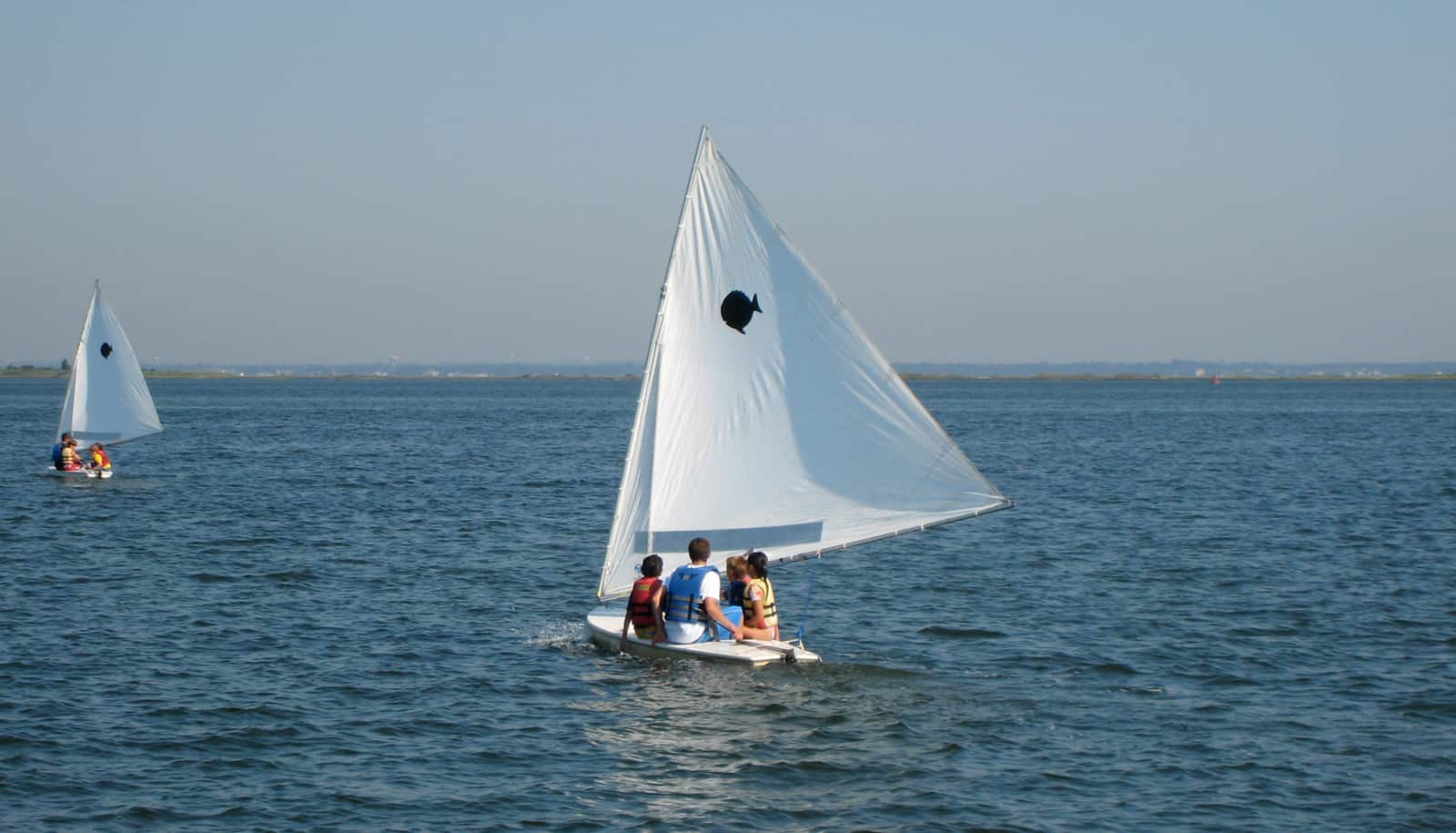
Best Small Sailboats for Beginners: Discover My Three Favorites and Set Sail with Confidence
Sailing is a fun and enjoyable activity for everyone, no matter the experience level.
Mastering how to sail a primary boat is effortless. I encourage beginners to practice in the right environment as they can gain considerable experience with time.
Since most beginners make the mistake of picking the wrong boat to start with, they get frustrated and quit before they can sail by themselves.
In this blog, I will cover the best small sailboats for beginners to help mitigate this problem.
Read on to learn more…
- Catalina 16.5
So, What’s the Best Small Sailing Boat For Beginners?
The three best small sailboats for beginners.
Sunfish is a personalized boat for beginners to sail with. Its ease of use makes sailing enjoyable for both beginners and experienced sailors.
Key Specifications
- Sail Area: 75 Square Feet
- Hull Weight: 120 Pounds
- Capacity: 1-2 people
- Optimal Weight: up to 190 pounds
Key Features
- Sunfish has a patented kick-up rudder that makes beach launches, landings, and shallow-water sailing effortless.
- It has a self-bailing cockpit.
- It has a stainless steel bow handle that enables carrying, docking, and holding the boat into the wind while launching or loading.
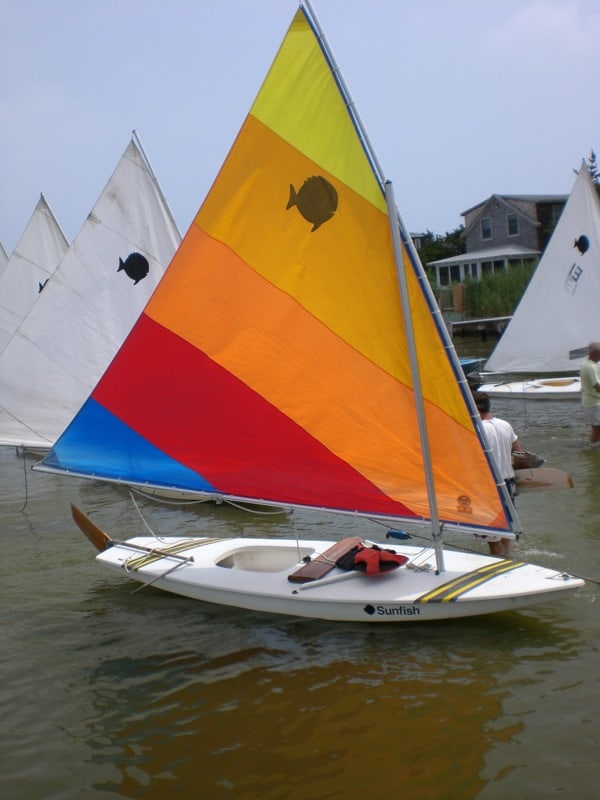
- Easy to sail and rig using a single control line
- Fast planning sailboat in good wind
- It is cheap
- Daggerboard and kick-up rudder enable easy beaching.
- Little freeboard and small cockpit
- A beginner can easily capsize
Why I Have Included Sunfish Sailboat in My List
I have included this sailboat in my list because it combines performance, durability, and stability suitable for beginners and experts.
With this boat, you can quickly learn how to sail, and you can’t go wrong with it.
More Info International Sunfish Class Association
Hunter 15 is a safe and versatile boat for both beginners and masters in sailing.
- Passenger capacity: 4
- Length overall: 4.4 m (14′6″)
- Draft – Board Up: (6″)0.15 m
- Draft – Board Down: (3’0″)0.92 m
- Material: fiberglass
- Appendages: lifting keel
- Intended use: daysailer
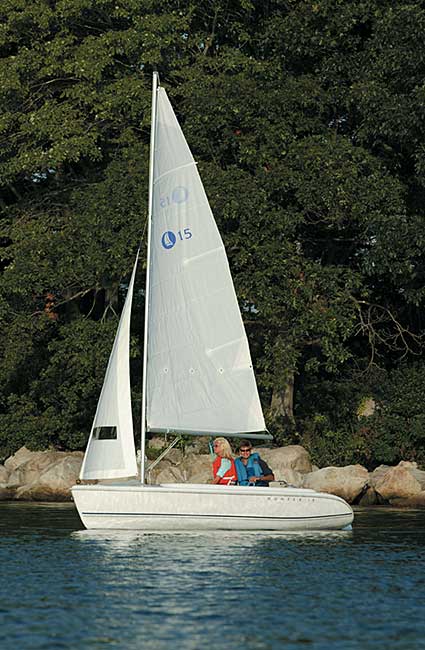
- Stainless steel arch
- Spacious cockpit area
- Easy to balance
- It doesn’t sail well in downwind
- No separate starting battery
Why I Have Included the Hunter 15 Sailboat in My List
I have included this boat in my list because it has a comfortable wide beam, a contoured self-bailing cockpit and fiberglass construction.
Additionally, it is designed to allow beginners to sail around with ease, and it is a safe boat giving sailors a confident feeling and peace of mind as they sail.
More Info marlow-hunter.com
Catalina 16.5 is a small, powerful recreational sailing boat constructed predominantly of fiberglass.
- LOA: 16.33 ft. / 4.98 m
- Approximate Base Wt.: 430lb.
- Draft Board up: 5″
- Draft Board down: 4’5″
- Fiberglass composite Kick-up rudder
- Stainless steel standing rigging
- Adjustable hiking straps
- Self-bailing cockpit
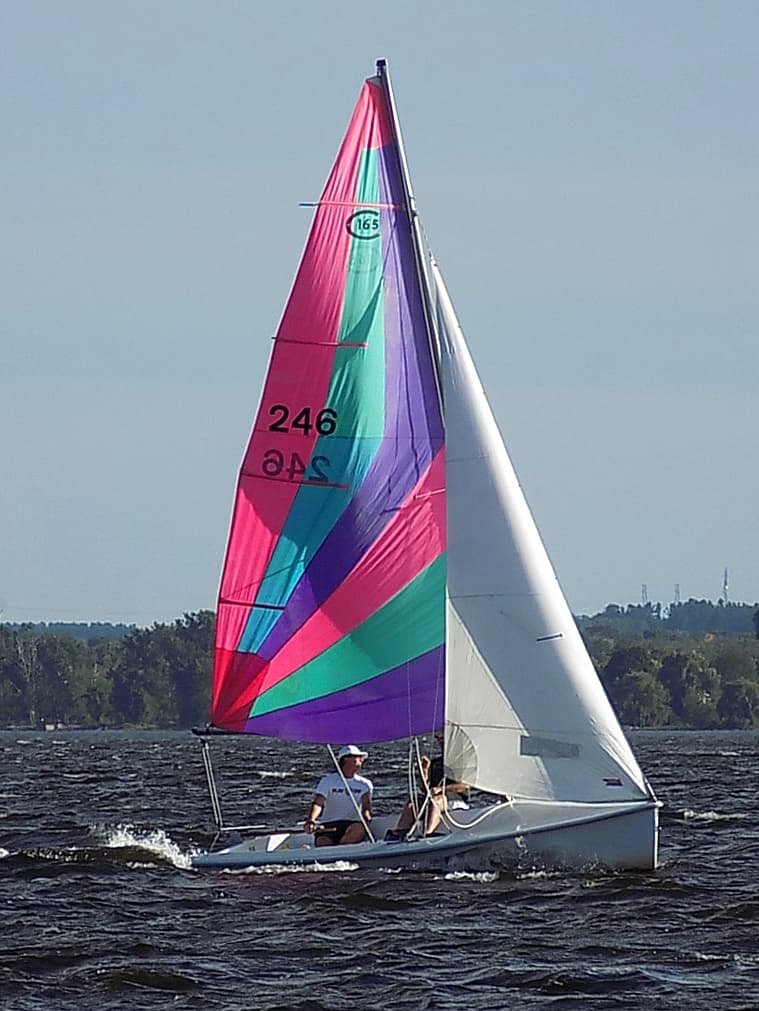
- Fast sailboat
- Easy to sail and rig around
- Difficult to balance
Why I Have Included Catalina 16.5 Sailboat in My List
I have included Catalina 16.5 boat in the list because of its fantastic design, is versatile, and you can get them in two designs: the keel model and the centreboard model.
More Info www.catalinayachts.com
Here are my top three picks of best small sailboat for beginners :
If I had to pick one, I would go for Hunter 15 sailboat because it has the the best safety features. The Hunter 15 sailboat is also easy to operate, plus you can dock with no problem. The boat is easy to maintain, and it’s not complicated for a beginner.
What is your choice?
Disclaimers
All product names, logos, and brands are property of their respective owners. All company, product and service names used in this website are for identification purposes only. Use of these names, logos, and brands does not imply endorsement.
It is our policy to make every effort to respect the copyrights of outside parties. If you believe that your copyright has been misused, please provide us with a message stating your position and we will endeavor to correct any misuse immediately.
Some of the links in this post are affiliate links. As an Amazon Associate, we earn from qualifying purchases. This means if you click on the link and purchase the item, we may receive an affiliate commission, at no extra cost to you. This helps us keep this website alive. Learn more here .

Hi, I’m Igor, Skipper of S/Y "The Hooker". A decade ago, I conquered my childhood dream: to be a sailing skipper, own a sailing yacht. Yes, it knocked dullness out of my urban life — Read more →
Leave a Reply Cancel Reply
Your email address will not be published. Required fields are marked *
Name *
Email *
Add Comment *
Save my name, email, and website in this browser for the next time I comment.
Post Comment
Related Posts
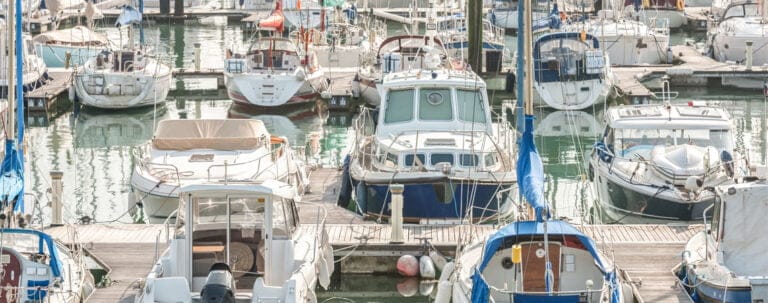
Best Oil Extractor for Boat – Does the Easy Oil Change Work?
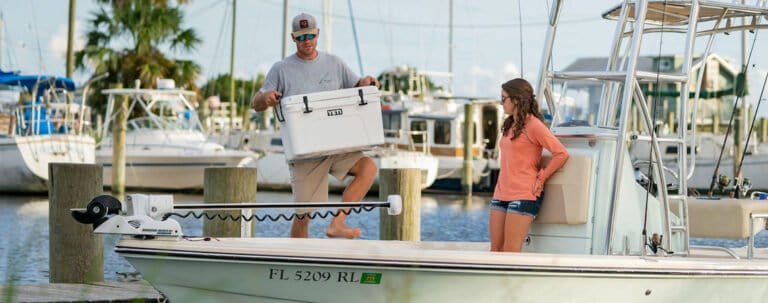
Choose the Right Marine Cooler for Your Next Adventures!
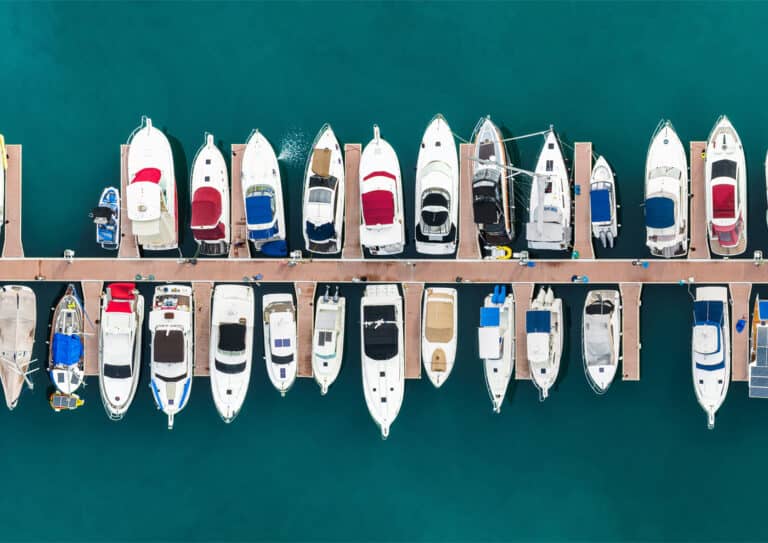
How To Buy A Used Boat? (Insider Secrets For A Safe Purchase)
Amazon Disclosure
DesperateSailors.com is a participant in the Amazon Services LLC Associates Program, an affiliate advertising program designed to provide a means for sites to earn advertising fees by advertising and linking to Amazon.com. As an Amazon Associate, we earn from qualifying purchases. Amazon and the Amazon logo are trademarks of Amazon.com, Inc., or its affiliates.
Please refer to our Privacy & Affiliate policy for more details.
- The Ultimate Guide to Small Sailboats: From Dinghies to Ocean Cruisers
Ahoy there, maritime enthusiasts! Are you tired of being a landlubber and ready to take on the open waters? Have you ever caught yourself daydreaming about sailing into the sunset but thought that owning a sailboat was only for the wealthy or the experienced? The good news is that small sailboats are here to prove you wrong. Easy to maneuver, affordable, and incredibly fun, these little vessels offer a world of possibilities for novices and veterans alike. So, why not set sail on this journey and explore what small sailboats have to offer?
Types of Small Sailboats
Dinghies are like the hatchbacks of the sailing world—compact, practical, and surprisingly versatile. Usually measuring under 15 feet, they are the go-to boats for sailing newbies to cut their teeth on. Why? Because they're affordable and easy to manage. Think of a dinghy as your first bicycle—sure, you'll fall a few times, but the lessons learned are invaluable.
If a dinghy is a hatchback, then a daysailer would be your sporty coupe—ideal for a fun day out but not really for a week-long journey. These boats are a bit larger, typically ranging from 15 to 25 feet, and can comfortably accommodate 4 to 6 people. They're perfect for sailing close to shore, having a picnic on the water, or enjoying a beautiful sunset.
Looking for something a bit unique? The catboat could be your feline friend on the water. These boats are known for their single mast and mainsail, making them easier to handle. They’re the sort of boat that likes to lounge lazily in shallow waters but can also pick up the pace when needed.
Features to Consider When Buying
Hull material.
The hull is like the foundation of a house—if it's not strong, everything else fails. Generally, you'll find hulls made of fiberglass, wood, or even aluminum. Each material has its pros and cons. For instance, fiberglass is durable and low-maintenance but can be expensive. Wood offers a classic look but requires more upkeep.
Would you prefer manual or automatic transmission in a car? Similarly, the rig type of your sailboat affects your sailing experience. You might opt for a simple sloop with one mast and two sails or maybe a cutter with an additional headsail for better balance. The choice is yours.
Length and Beam
Here's where size really matters. The length and beam (width) of your boat will significantly impact its stability, storage capacity, and how it handles in different water conditions. It's not always that smaller is easier to handle; sometimes, a slightly larger boat offers better stability and amenities.
Advantages of Small Sailboats
Affordability.
Let's face it—owning a boat isn't cheap. But small sailboats make the dream more accessible. Not only are the upfront costs generally lower, but ongoing maintenance expenses like docking fees, cleaning, and repairs are also more manageable. It's the difference between owning a high-end sports car and a reliable sedan—both can be fun, but one is undoubtedly easier on the wallet.
Maneuverability
Remember the first time you parallel parked a car? Now, imagine doing that with a 40-foot boat! Small sailboats shine when it comes to maneuverability. They're easier to steer, quicker to respond, and a breeze to dock, making them perfect for navigating through narrow channels or crowded marinas.
Low Maintenance
Less is more when it comes to boat maintenance. Smaller surface area means fewer places for dirt and grime to hide, making cleaning easier. Not to mention, smaller engines (if your boat has one) mean less complicated mechanical problems to solve. It's like owning a plant that only needs water once a week—low commitment, high reward.
Popular Small Sailboats
Remember the Volkswagen Beetle of yesteryears? Compact, easy to manage, and immensely popular—that's what Sunfish is to the world of small sailboats. Whether you want to race or just sail leisurely, this boat is a versatile choice that won't disappoint.
For those who crave a bit more adrenaline, the J/22 is like the sports bike of small sailboats. Known for its speed, agility, and performance, this boat is a favorite in racing circles. It's agile enough to make quick turns yet sturdy enough to handle a variety of sea conditions.
Catalina 22
If you're looking for the minivan of small sailboats—functional, family-friendly, and reliable—the Catalina 22 is for you. Ideal for weekend trips with the family, this boat offers a cabin for shelter, a cooking space, and even a small toilet. It's a floating home away from home.
Small Sailing Yachts for Sale
Where to buy.
Buying a boat can be like buying a car; there are various avenues available. You can go through dealerships, check out classified ads, or even explore online platforms like Boat Trader or YachtWorld. Just like you wouldn't buy a car without a test drive, make sure to do a sea trial before making a purchase.
Price Range
The cost of your new aquatic venture can vary widely depending on the size, brand, and features. You might find a used dinghy for as low as $1,000 or a top-of-the-line daysailer that costs over $20,000. Therefore, it's crucial to budget not just for the initial purchase but also for the ongoing costs like maintenance, insurance, and docking fees.
(To be continued...)
Read our top notch articles on topics such as sailing, sailing tips and destinations in our Magazine .
Check out our latest sailing content:
Top 10 reasons boaters contact their insurers
The best sailing routes from Biograd na Moru
Yachting Away from Ourselves: A Voyage to Inner Peace
Sail to the 7 most beautiful sights in Greece
What skipper's licence do I need?
From Lefkada or Corfu to Paxos and Antipaxos
Discover the paradise of Paxos and Antipaxoss
Discover Corfu: sailing adventure in the Ionian
Sextant and navigation: survival without GPS
5 best sailing routes in the Bahamas
Yachting guide to the Bahamas
The ultimate yacht cleaning kit
Introduction to chartering with a skipper
Traditional sailor tattoos: Meaning of the swallow
The most popular catamarans of 2023
Fishing and sailing: where to sail for the best catches?
Lighthouses you won't forget
New Year's resolution: let's sail more eco
British Virgin Islands: sailing paradise
How to get kids to enjoy sailing?
How to sail a yacht on a tailwind
How to sail a yacht in crosswinds
Götheborg: the greatest sailing ship
How to have a nautical Christmas
What to pack for a tropical sailing
How to sail a yacht against the wind
Sailing the Maldives: paradise
Interview: is ocean pollution irreversible?
How to gear up for the 2024 sailing season
Medicanes in Greece
Small Bluewater Sailboats
Definition and features.
When it comes to small sailboats, not all are built for the big leagues, aka open-ocean sailing. However, some compact beauties are fully capable of taking on the mighty seas, and these are commonly referred to as "bluewater sailboats." These boats generally have reinforced hulls, deep keels for added stability, and more robust rigging systems. They also often come with advanced navigation and safety features like radar and autopilot systems.
If you're serious about open-ocean sailing but don't want a massive boat, brands like Nor'Sea and Pacific Seacraft have some excellent offerings. These boats might be small in size (often under 30 feet), but they are big on features and sturdiness, designed to withstand challenging sea conditions.
Boats for Cruising
Characteristics.
A cruiser is like a comfortable sedan equipped for a cross-country road trip. Similarly, cruising boats are designed for longer journeys and typically feature amenities like sleeping cabins, cooking facilities, and even bathrooms. However, small cruising sailboats make these comforts available in a compact form, ensuring you don't have to compromise on luxury while also enjoying the benefits of a small boat.
The market offers various models to suit different cruising styles. If you prefer a classic, vintage look, the Bristol series offers some wonderful choices. Those who want a more modern flair might gravitate towards Hunter or Beneteau models. No matter your preference, there's likely a small cruising sailboat that fits the bill.
Very Small Sailing Boats
What makes them unique.
We're talking about boats usually under 10 feet, often even as small as 6 or 7 feet. These are the "motorbikes" of the sailing world—quick, nimble, and perfect for a joyride, albeit on water. What they lack in amenities, they make up for in sheer fun and the ability to go places bigger boats can't.
Very small sailing boats are perfect for specific types of water activities. You can use them for fishing, exploring secluded inlets, or just enjoying a peaceful day on the water. They are also excellent for teaching kids the basics of sailing due to their simplicity and ease of handling.
Small Ocean Sailboats
Ocean-capable small boats.
Yes, you read that right—there are small sailboats designed for ocean sailing. Unlike their cousins confined to more tranquil waters, these boats have features that make them seaworthy. However, don't assume that any small boat can be taken on an ocean voyage. Specific design features are essential for this kind of challenging adventure.
Essential Features
So what makes a small sailboat ocean-worthy? For starters, a strong hull designed to take on challenging sea conditions. You'd also want a deep keel for stability, a robust rigging system to withstand high winds, and multiple fail-safes like backup navigation systems.
Small Ocean Cruisers
Adaptability.
Ocean cruisers in a small size offer the best of both worlds—they are versatile enough for both coastal cruising and open-ocean voyages. These boats are like your all-terrain vehicles, capable yet compact.
Pros and Cons
While adaptable, small ocean cruisers may lack some of the luxury or speed that larger yachts can offer. However, their versatility and ease of handling often make them a popular choice for those who like a variety of sailing experiences.
Small Cruising Sailboats
Ideal for beginners.
If you're a rookie in the world of sailing, a small cruising sailboat could be your best bet. These boats are typically easy to handle, straightforward to maintain, and offer enough amenities for short trips—making them an ideal starting point.
Popular Models
If you're new to cruising, a couple of models might catch your attention. The Compac 16, known for its easy handling and classic look, is often recommended for beginners. Another excellent option is the Catalina 18, which offers a bit more room without compromising ease of use.
Setting sail on a small sailboat opens up a world of opportunities—whether you're a seasoned sailor looking for a weekend thrill or a beginner aiming for a long-term commitment to the sea. Understanding the types, features, advantages, and options in the small sailboat market will help you make an educated choice. The sea is vast and welcoming, offering adventures and tranquility alike, and a small sailboat can be your perfect vessel for exploration.
So what are you waiting for? Take a look at our range of charter boats and head to some of our favourite sailing destinations.
FAQs: more about Small Sailboats
What's the best small sailboat for beginners, can small sailboats be used for ocean sailing, how much does a small sailboat cost, what features should i consider when buying a small sailboat, do small sailboats have sleeping accommodations, i am ready to help you with booking a boat for your dream vacation. contact me..

Denisa Nguyenová
- BOAT OF THE YEAR
- Newsletters
- Sailboat Reviews
- Boating Safety
- Sailing Totem
- Charter Resources
- Destinations
- Galley Recipes
- Living Aboard
- Sails and Rigging
- Maintenance

7 Small Sailboats for Everyday Cruising
- By Cruising World
- Updated: July 29, 2019
Not everyone needs a 30-foot sailboat equipped with bunks, a galley and head to go off cruising. In fact, all we really need is a hull, mast, rudder, and sail. There is nothing better than the thrill of a small sailboat or daysailer slipping through the waters of a lake, bay or even the open ocean.
Whether it’s simplicity to rig, ease of trailering or a manageable size that you’re looking for, these small sailboats are perfect for the cruising enthusiast who wants the thrill of the sea without the commitment of a 30-footer. And some of these sailboats come with cabins. This roundup of the best daysailers goes to show that sometimes big things come in small packages.
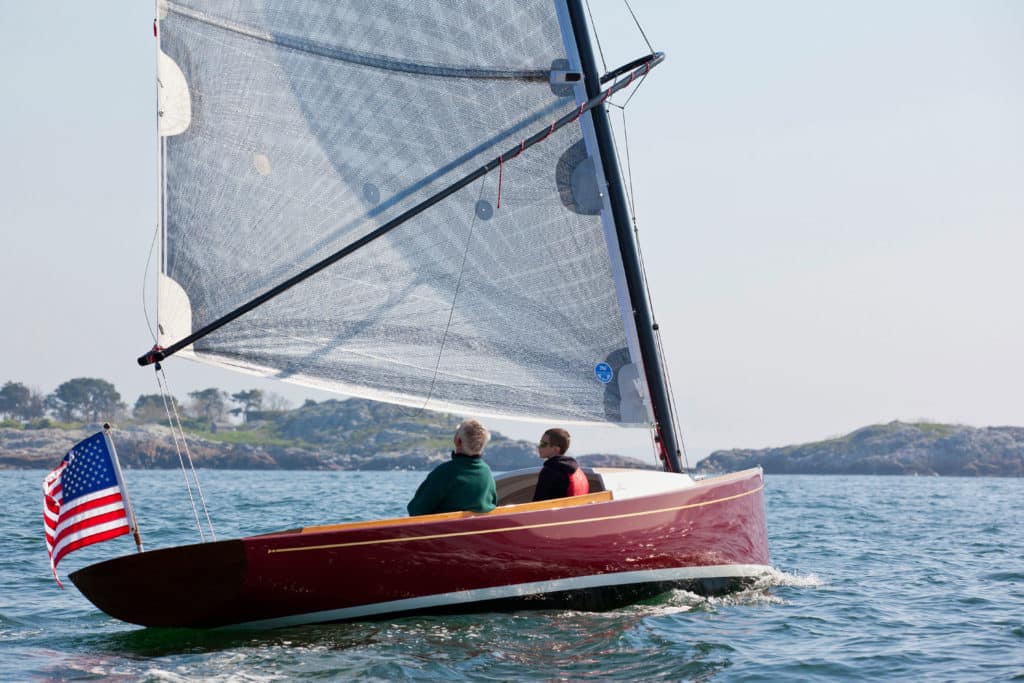
Marblehead 22 Daysailer
Traditional-looking above the waterline and modern beneath, the cold-molded hull sports a deep bulb keel and a Hall Spars carbon-fiber mast with a wishbone rig and square-top main. The 11-foot-9-inch cockpit can seat a crowd, and a small cuddy forward will let you stow your friends’ gear for the day.
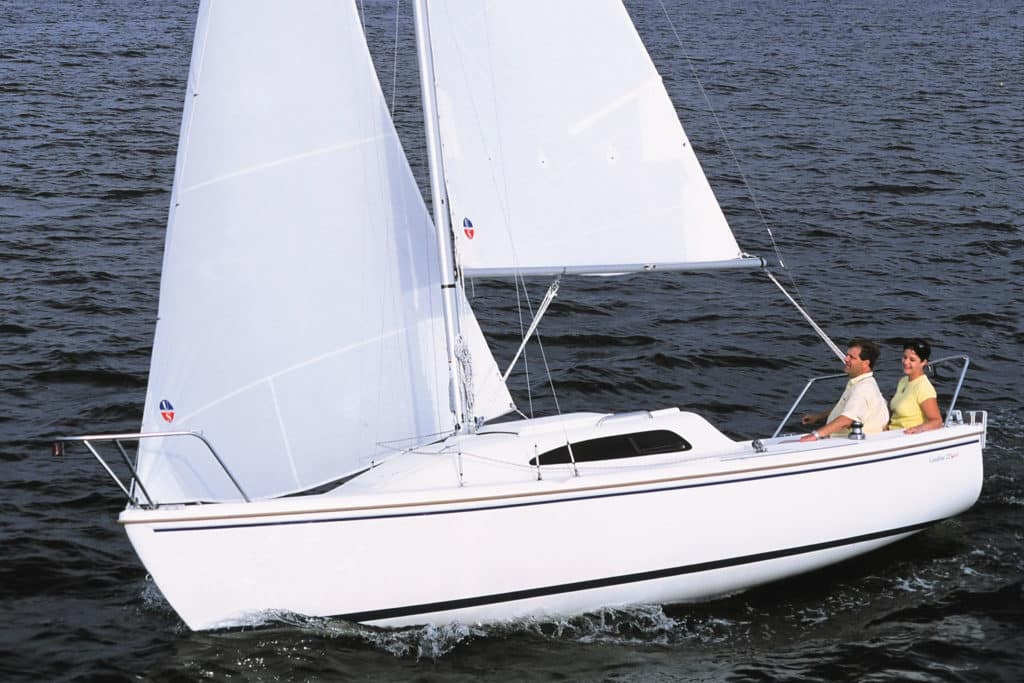
Catalina 22 Sport
Recently, the company introduced the Catalina 22 Sport, an updated design that can compete with the older 22s. The boat features a retractable lead keel; a cabin that can sleep four, with a forward hatch for ventilation; and a fractional rig with a mainsail and a roller-furling jib. Lifelines, a swim ladder, and an engine are options, as are cloth cushions; vinyl cushions are standard. The large cockpit will seat a crowd or let a mom-and-pop crew stretch out and enjoy their sail.
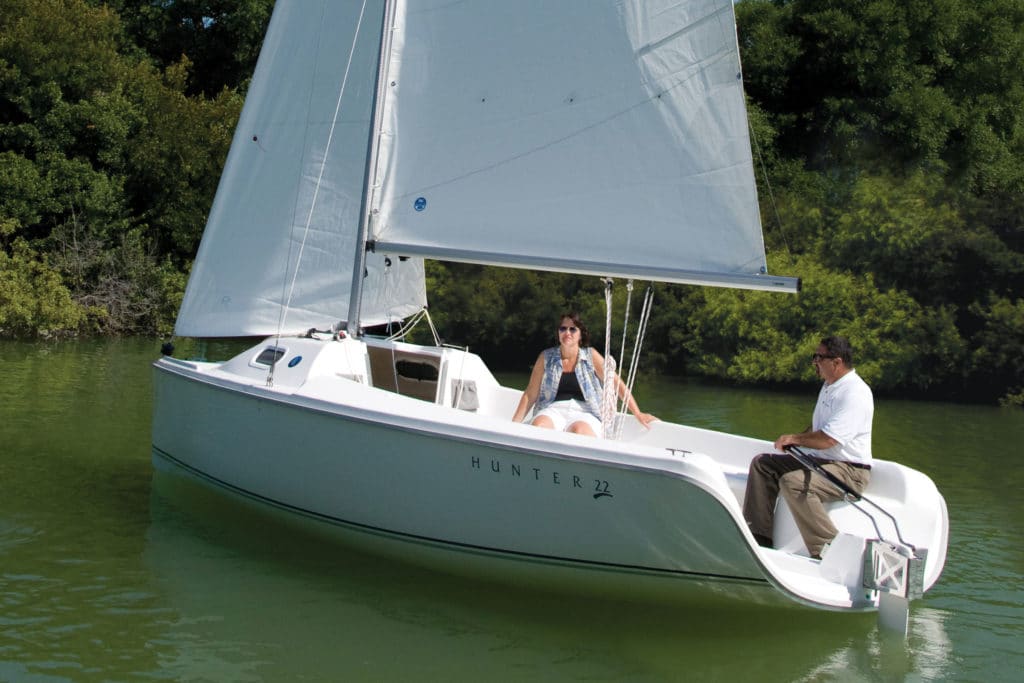
With its cuddy cabin, twin bunks, optional electrical system, opening screened ports, and portable toilet, a parent and child or a couple could comfortably slip away for an overnight or weekend. Add in the optional performance package, which includes an asymmetric spinnaker, a pole, and a mainsheet traveler, and you could be off to the races. The boat features a laminated fiberglass hull and deck, molded-in nonskid, and a hydraulic lifting centerboard. Mount a small outboard on the stern bracket, and you’re set to go.
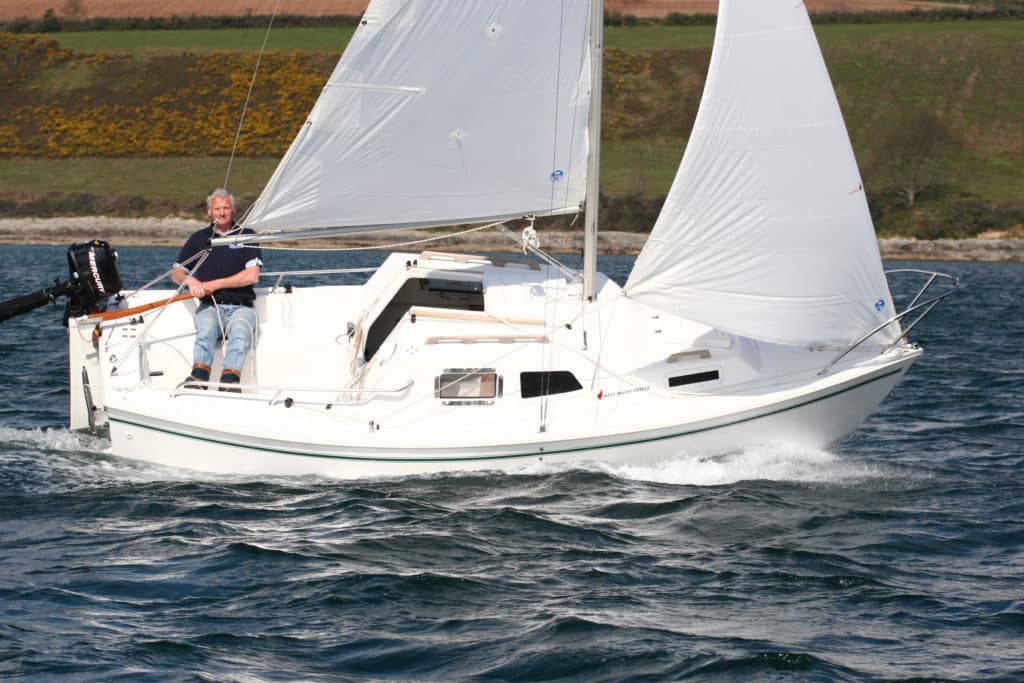
West Wight Potter P 19
First launched in 1971, this is a line of boats that’s attracted a true following among trailer-sailors. The P 19’s fully retractable keel means that you can pull up just about anywhere and go exploring. Closed-cell foam fore and aft makes the boat unsinkable, and thanks to its hard chine, the boat is reportedly quite stable under way.
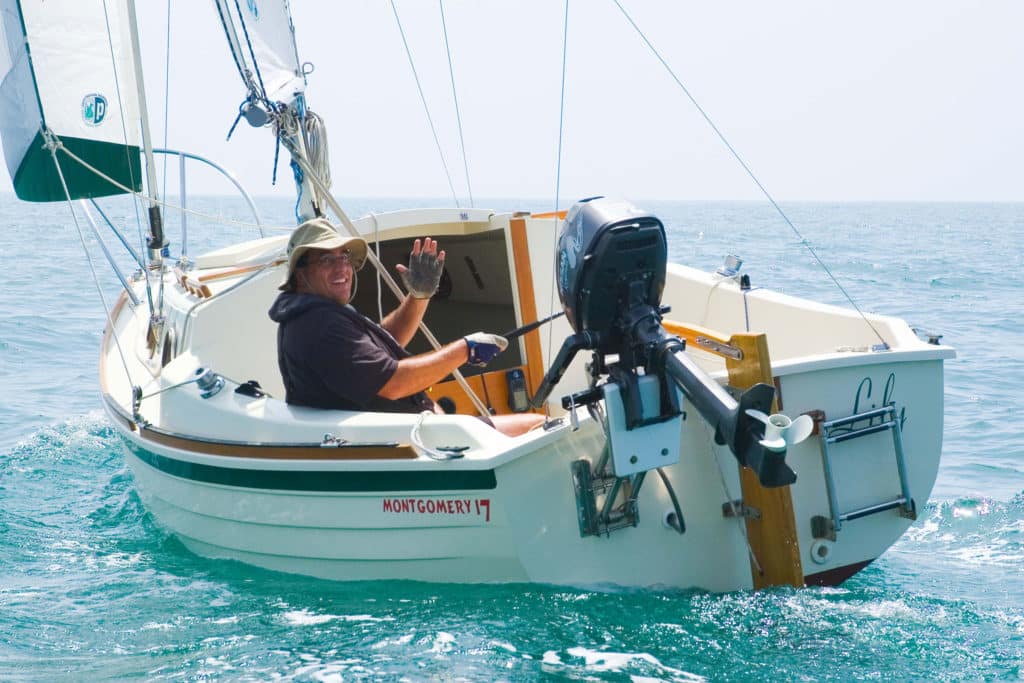
Montgomery 17
With a keel and centerboard, the boat draws just under 2 feet with the board up and can be easily beached when you’re gunkholing. In the cuddy cabin you’ll find sitting headroom, a pair of bunks, a portable toilet, optional shore and DC power, and an impressive amount of storage space. The deck-stepped mast can be easily raised using a four-part tackle. The builder reports taking his own boat on trips across the Golfo de California and on visits to California’s coastal islands. Montgomery makes 15-foot and 23-foot models, as well.
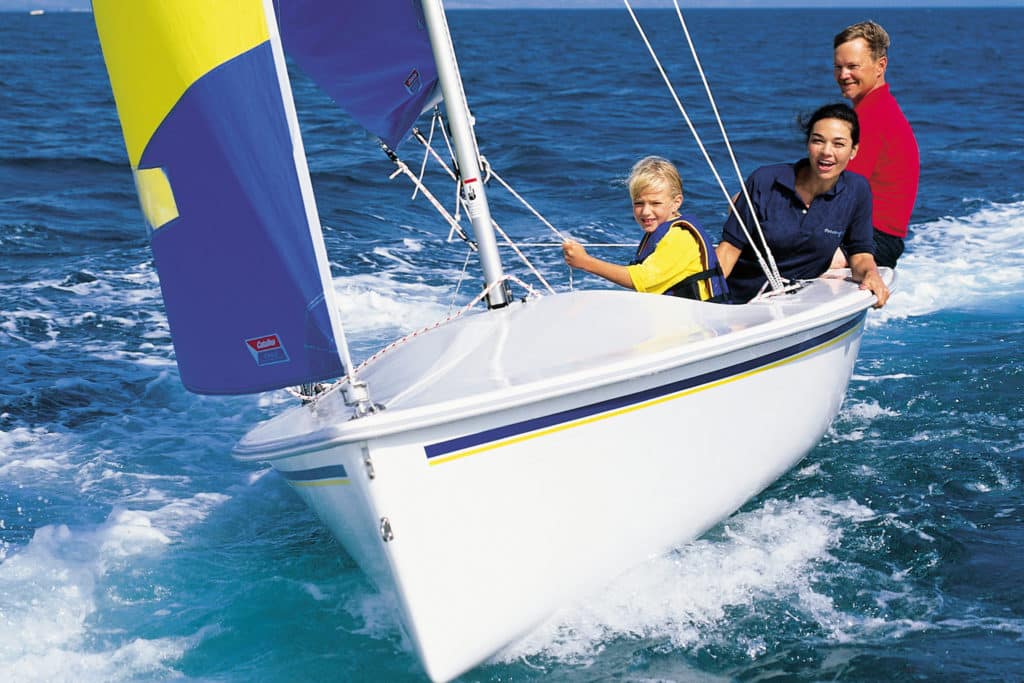
Catalina 16.5
With the fiberglass board up, the 17-foot-2-inch boat draws just 5 inches of water; with the board down, the 4-foot-5-inch draft suggests good windward performance. Hull and deck are hand-laminated fiberglass. The roomy cockpit is self-bailing, and the bow harbors a good-sized storage area with a waterproof hatch.
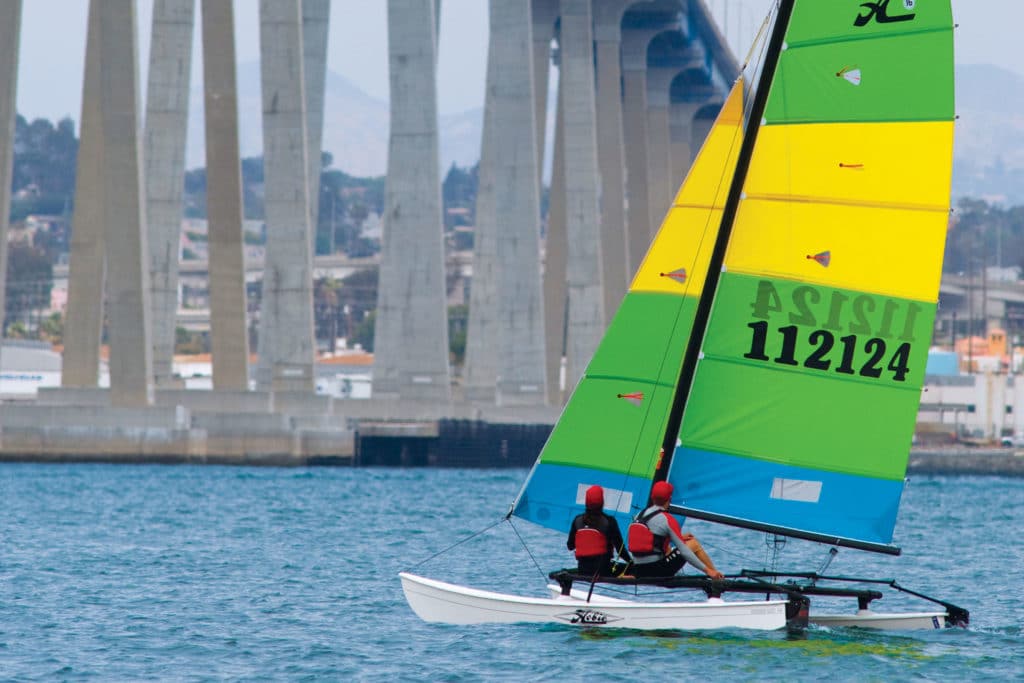
The company has introduced many other multihulls since, but more than 100,000 of the 16s have been launched, a remarkable figure. The Hobie’s asymmetric fiberglass-and-foam hulls eliminate the need for daggerboards, and with its kick-up rudders, the 16 can be sailed right up to the beach. Its large trampoline offers lots of space to move about or a good place to plant one’s feet when hanging off the double trapezes with a hull flying. The boat comes with a main and a jib; a spinnaker, douse kit, trailer, and beach dolly are optional features.
- More: 21 - 30 ft , Boat Gallery , monohull , Sailboat Reviews , Sailboats , under 20 ft , used boat guide
- More Sailboats
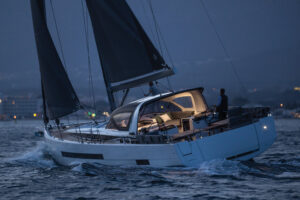
Sailboat Review: Jeanneau Yachts 55
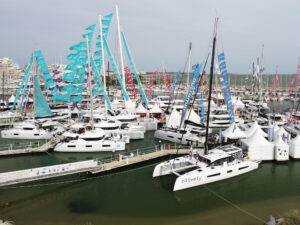
Modern Multihulls: The Future’s Electric

A Gem in New England

Thinking of a Shift to Power?

A Big, New World

Cruising World On Board: Windelo 50

Into the Mystic: A Pacific Northwest Adventure

How to Ride a Wave
- Digital Edition
- Customer Service
- Privacy Policy
- Email Newsletters
- Cruising World
- Sailing World
- Salt Water Sportsman
- Sport Fishing
- Wakeboarding
Great choice! Your favorites are temporarily saved for this session. Sign in to save them permanently, access them on any device, and receive relevant alerts.
- Sailboat Guide

- Collections
Twenty Small Sailboats to Take You Anywhere
John Vigor turns the spotlight on twenty seaworthy sailboats that are at home on the ocean in all weather. These are old fiberglass boats, mostly of traditional design and strong construction. All are small, from 20 feet to 32 feet overall, but all have crossed oceans, and all are cheap.
Choosing the right boat to take you across an ocean or around the world can be confusing and exasperating, particularly with a tight budget. Vigor sets out to remedy that in this book. He compares the designs and handling characteristics of 20 different boats whose secondhand market prices start at about $3,000. Interviews with experienced owners (featuring valuable tips about handling each boat in heavy weather) are interspersed with line drawings of hulls, sail plans, and accommodations. Vigor has unearthed the known weaknesses of each boat and explains how to deal with them. He rates their comparative seaworthiness, their speed, and the number of people they can carry in comfort. If you have ever dreamed the dream this book can help you turn it into reality.

International Folkboat

Pacific Seacraft 25

Albin Vega 27

Cape Dory 25D

Contessa 26

Morris 26 Frances

Catalina 27

Falmouth Cutter 22

Pacific Seacraft Dana 24

Pearson Triton

Contessa 32

Southern Cross 31

Bristol Channel Cutter

Nicholson 31

Allied Seawind

Westsail 32
Embed this page on your own website by copying and pasting this code.

- About Sailboat Guide
©2024 Sea Time Tech, LLC
This site is protected by reCAPTCHA and the Google Privacy Policy and Terms of Service apply.

SMALL SAILBOAT
Reverso air.
"Folding and nesting dinghies aren’t a new concept, but ones designed and built with exceptional performance and high-tech construction are."
Foldable Small Sailboats
.jpg)
Ultra-Lightweight
The largest section weighs only 37 lbs (16.8 kgs)

Fastest compact small sailing boat.
Our team comes from Sailboat racing, civil aviation and naval architecture, the Reverso Air clearly has a racing DNA. Discover the joy of steering a precise and responsive dinghy The speed record is 16.2 kts. Will you be ready to take the challenge?

Portable : fits in your car
You can now go on a weekend trip with your boat ... in the trunk of your car.
Latest customer reviews What they say about their Reverso
The Reverso Air is a USA boat of the year winner. It's been awarded best design at Audi talents awards. Check what our owners say about their boat !
Get in touch with
Reviewed in
La Tour de Peilz
verified owner
When I decide to go sailing, it takes me 40 minutes to launch the boat after taking it out of the cellar, loading it behind the bike and taking it to the lake. The sensations on the water are fantastic, the boat starts on the plane and splits the waves with elegance. In the small areas of Lake Geneva you can comfortably sit in the large cockpit to heel the boat and simply enjoy being on the water even in this early winter.
The Reverso is a great boat and I've already had a lot of fun with it! Every time I ride it, people come up to admire it and ask me what its special features are. No one seems to have seen anything similar.
This sailboat looks like art
I'm excited to tell you that I received my sailboat tonight.This sailboat look like art, I'm very satisfied.Thank you very much.
1.3135236125815812
103.91100881074672
Excellence in boatbuilding
We are small sailboats experts, with a vision to push our sport with innovative designs and excellence in boatbuilding. We are the Reverso team, building the new Reverso Air We have built hundreds of sailboats, shipped to every continent and won multiple awards including the USA boat of the year. The Reverso Air has been tested and certified by independent body ICNN under number AR A1 IMA 16157 VM, issued 09/09/16

New Reverso Air
The fastest and most compact small sailboat ever built. Foldable design, handmade in France.

INNOVATIONS
Folding Hull Take it inside your car Fast and Easy
Performance and racing Easy sailing Kids, family
USA Boat of the year Nominated Best design at Audi Talents awards
10 parc club du Millénaire, 1025 av Henri Becquerel 34000 Montpellier France
Yachting Monthly
- Digital edition

25 of the best small sailing boat designs
- Nic Compton
- August 10, 2022
Nic Compton looks at the 25 yachts under 40ft which have had the biggest impact on UK sailing

There’s nothing like a list of best small sailing boat designs to get the blood pumping.
Everyone has their favourites, and everyone has their pet hates.
This is my list of the 25 best small sailing boat designs, honed down from the list of 55 yachts I started with.
I’ve tried to be objective and have included several boats I don’t particularly like but which have undeniably had an impact on sailing in the UK – and yes, it would be quite a different list if I was writing about another country.
If your favourite isn’t on the best small sailing boat designs list, then send an email to [email protected] to argue the case for your best-loved boat.
Ready? Take a deep breath…

Credit: Bob Aylott
Laurent Giles is best known for designing wholesome wooden cruising boats such as the Vertue and Wanderer III , yet his most successful design was the 26ft Centaur he designed for Westerly, of which a remarkable 2,444 were built between 1969 and 1980.
It might not be the prettiest boat on the water, but it sure packs a lot of accommodation.
The Westerly Centaur was one of the first production boats to be tank tested, so it sails surprisingly well too. Jack L Giles knew what he was doing.
Colin Archer

Credit: Nic Compton
Only 32 Colin Archer lifeboats were built during their designer’s lifetime, starting with Colin Archer in 1893 and finishing with Johan Bruusgaard in 1924.
Yet their reputation for safety spawned hundreds of copycat designs, the most famous of which was Sir Robin Knox-Johnston ’s Suhaili , which he sailed around the world singlehanded in 1968-9.
The term Colin Archer has become so generic it is often used to describe any double-ender – so beware!
Contessa 32
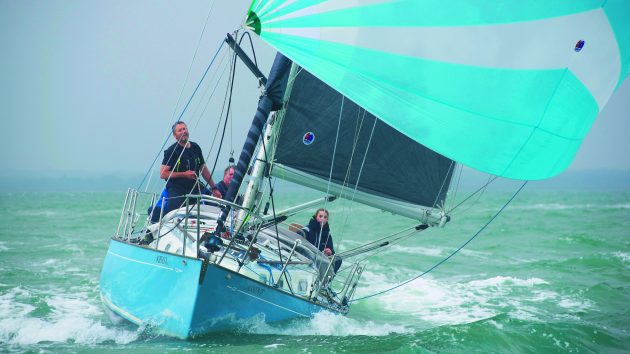
Assent ‘s performance in the 1979 Fastnet Race makes the Contessa 32 a worth entry in the 25 best small sailing boat designs list. Credit: Nic Compton
Designed by David Sadler as a bigger alternative to the popular Contessa 26, the Contessa 32 was built by Jeremy Rogers in Lymington from 1970.
The yacht’s credentials were established when Assent , the Contessa 32 owned by Willy Kerr and skippered by his son Alan, became the only yacht in her class to complete the deadly 1979 Fastnet Race .
When UK production ceased in 1983, more than 700 had been built, and another 20 have been built since 1996.
Cornish Crabber 24

It seemed a daft idea to build a gaff-rigged boat in 1974, just when everyone else had embraced the ‘modern’ Bermudan rig.
Yet the first Cornish Crabber 24, designed by Roger Dongray, tapped into a feeling that would grow and grow and eventually become a movement.
The 24 was followed in 1979 by the even more successful Shrimper 19 – now ubiquitous in almost every harbour in England – and the rest is history.
Drascombe Lugger
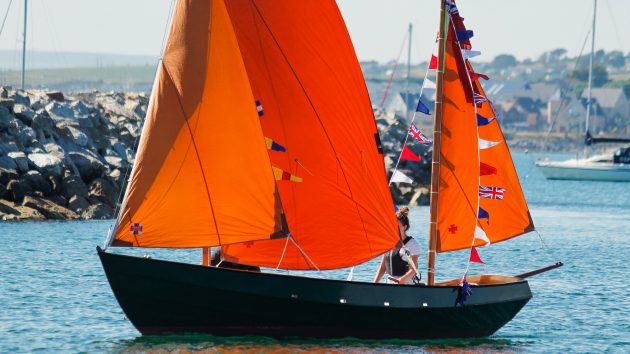
Credit: David Harding
There are faster, lighter and more comfortable boats than a Drascombe Lugger.
And yet, 57 years after John Watkinson designed the first ‘lugger’ (soon changed to gunter rig), more than 2,000 have been built and the design is still going strong.
More than any other boat, the Drascombe Lugger opened up dinghy cruising, exemplified by Ken Duxbury’s Greek voyages in the 1970s and Webb Chiles’s near-circumnavigation on Chidiock Tichbourne I and II .

The 26ft Eventide. Credit: David Harding
It’s been described as the Morris Minor of the boating world – except that the majority of the 1,000 Eventides built were lovingly assembled by their owners, not on a production line.
After you’d tested your skills building the Mirror dinghy, you could progress to building a yacht.
And at 24ft long, the Eventide packed a surprising amount of living space.
It was Maurice Griffiths’ most successful design and helped bring yachting to a wider audience.

You either love ’em or you hate ’em – motorsailers, that is.
The Fisher 30 was brought into production in 1971 and was one of the first out-and-out motorsailers.
With its long keel , heavy displacement and high bulwarks, it was intended to evoke the spirit of North Sea fishing boats.
It might not sail brilliantly but it provided an exceptional level of comfort for its size and it would look after you when things turned nasty.
Significantly, it was also fitted with a large engine.

Credit: Rupert Holmes
It should have been a disaster.
In 1941, when the Scandinavian Sailing Federation couldn’t choose a winner for their competition to design an affordable sailing boat, they gave six designs to naval architect Tord Sundén and asked him to combine the best features from each.
The result was a sweet-lined 25ft sloop which was very seaworthy and fast.
The design has been built in GRP since the 1970s and now numbers more than 4,000, with fleets all over the world.

Credit: Kevin Barber
There’s something disconcerting about a boat with two unstayed masts and no foresails, and certainly the Freedom range has its detractors.
Yet as Garry Hoyt proved, first with the Freedom 40, designed in collaboration with Halsey Herreshoff, and then the Freedom 33 , designed with Jay Paris, the boats are simple to sail (none of those clattering jib sheets every time you tack) and surprisingly fast – at least off the wind .
Other ‘cat ketch’ designs followed but the Freedoms developed their own cult following.
Hillyard 12-tonner

The old joke about Hillyards is that you won’t drown on one but you might starve to death getting there.
And yet this religious boatbuilder from Littlehampton built up to 800 yachts which travelled around the world – you can find them cruising far-flung destinations.
Sizes ranged from 2.5 to 20 tons, though the 9- and 12-ton are best for long cruises.

The innovations on Jester means she is one of the best small sailing boat designs in the last 100 years. Credit: Ewen Southby-Tailyour
Blondie Hasler was one of the great sailing innovators and Jester was his testing ground.
She was enclosed, carvel planked and had an unstayed junk rig.
Steering was via a windvane system Hasler created.
Hasler came second in the first OSTAR , proving small boats can achieve great things.

Moody kicked off the era of comfort-oriented boats with its very first design.
The Moody 33, designed by Angus Primrose, had a wide beam and high topside to produce a voluminous hull .
The centre cockpit allowed for an aft cabin, resulting in a 33-footer with two sleeping cabins – an almost unheard of concept in 1973 –full-beam heads and spacious galley.
What’s more, her performance under sail was more than adequate for cruising.
Finally, here was a yacht that all the family could enjoy.
Continues below…

What makes a boat seaworthy?
What characteristics make a yacht fit for purpose? Duncan Kent explores the meaning of 'seaworthy' and how hull design and…

How boat design is evolving
Will Bruton looks at the latest trends and innovations shaping the boats we sail

How keel type affects performance
James Jermain looks at the main keel types, their typical performance and the pros and cons of each

Boat handling: How to use your yacht’s hull shape to your advantage
Whether you have a long keel or twin keel rudders, there will be pros and cons when it comes to…
Nicholson 32

Credit: Genevieve Leaper
Charles Nicholson was a giant of the wooden boat era but one of his last designs – created with his son Peter – was a pioneering fibreglass boat that would become an enduring classic.
With its long keel and heavy displacement, the Nicholson 32 is in many ways a wooden boat built in fibreglass – and indeed the design was based on Nicholson’s South Coast One Design.
From 1966 to 1977, the ‘Nic 32’ went through 11 variations.

Credit: Hallberg-Rassy
In the beginning there was… the Rasmus 35. This was the first yacht built by the company that would become Hallberg-Rassy and which would eventually build more than 9,000 boats.
The Rasmus 35, designed by Olle Enderlein, was a conservative design, featuring a centre cockpit, long keel and well-appointed accommodation.
Some 760 boats were built between 1967 and 1978.

Credit: Larry & Lin Pardey
Lyle Hess was ahead of his time when he designed Renegade in 1949.
Despite winning the Newport to Ensenada race, the 25ft wooden cutter went largely unnoticed.
Hess had to build bridges for 15 years before Larry Pardey asked him to design the 24ft Seraffyn , closely based on Renegade ’s lines but with a Bermudan rig.
Pardey’s subsequent voyages around the world cemented Hess’s reputation and success of the Renegade design.

Would the Rustler 36 make it on your best small sailing boat list? Credit: Rustler Yachts
Six out of 18 entries for the 2018 Golden Globe Race (GGR) were Rustler 36s, with the top three places all going to Rustler 36 skippers.
It was a fantastic endorsement for a long-keel yacht designed by Holman & Pye 40 years before.
Expect to see more Rustler 36s in the 2022 edition of the GGR!

It was Ted Heath who first brought the S&S 34 to prominence with his boat Morning Cloud .
In 1969 the yacht won the Sydney to Hobart Race, despite being one of the smallest boats in the race.
Other epic S&S 34 voyages include the first ever single-handed double circumnavigation by Jon Sanders in 1981

Credit: Colin Work
The Contessa 32 might seem an impossible boat to improve upon, but that’s what her designer David Sadler attempted to do in 1979 with the launch of the Sadler 32 .
That was followed two years later by the Sadler 29 , a tidy little boat that managed to pack in six berths in a comfortable open-plan interior.
The boat was billed as ‘unsinkable’, with a double-skinned hull separated by closed cell foam buoyancy.
What’s more, it was fast, notching up to 12 knots.

Credit: Dick Durham/Yachting Monthly
Another modern take on the Contessa theme was the Sigma 33, designed by David Thomas in 1979.
A modern underwater body combined with greater beam and higher freeboard produced a faster boat with greater accommodation.
And, like the Contessa, the Sigma 33 earned its stripes at the 1979 Fastnet, when two of the boats survived to tell the tale.
A lively one-design fleet soon developed on the Solent which is still active to this day.

A replica of Joshua Slocum’s Spray . Credit: Alamy Stock Photo
The boat Joshua Slocum used for his first singlehanded circumnavigation of the world wasn’t intended to sail much further than the Chesapeake Bay.
The 37ft Spray was a rotten old oyster sloop which a friend gave him and which he had to spend 13 months fixing up.
Yet this boxy little tub, with its over-optimistic clipper bow, not only took Slocum safely around the world but has spawned dozens of modern copies that have undertaken long ocean passages.

Credit: James Wharram Designs
What are boats for if not for dreaming? And James Wharram had big dreams.
First he sailed across the Atlantic on the 23ft 6in catamaran Tangaroa .
He then built the 40ft Rongo on the beach in Trinidad (with a little help from French legend Bernard Moitessier) and sailed back to the UK.
Then he drew the 34ft Tangaroa (based on Rongo ) for others to follow in his wake and sold 500 plans in 10 years.

Credit: Graham Snook/Yachting Monthly
The Twister was designed in a hurry.
Kim Holman wanted a boat at short notice for the 1963 season and, having had some success with his Stella design (based on the Folkboat), he rushed out a ‘knockabout cruising boat for the summer with some racing for fun’.
The result was a Bermudan sloop that proved nigh on unbeatable on the East Anglian circuit.
It proved to be Holman’s most popular design with more than 200 built.

Credit: Alamy Stock Photo
Laurent Giles’s design No15 was drawn in 1935 for a Guernsey solicitor who wanted ‘a boat that would spin on a sixpence and I could sail single-handed ’.
What the young Jack Giles gave him was a pretty transom-sterned cutter, with a nicely raked stem.
Despite being moderate in every way, the boat proved extremely able and was soon racking up long distances, including Humphrey Barton’s famous transatlantic crossing on Vertue XXXV in 1950.
Wanderer II and III

Credit: Thies Matzen
Eric and Susan Hiscock couldn’t afford a Vertue, so Laurent Giles designed a smaller, 21ft version for them which they named Wanderer II .
They were back a few years later, this time wanting a bigger version: the 30ft Wanderer III .
It was this boat they sailed around the world between 1952-55, writing articles and sailing books along the way.
In doing so, they introduced a whole generation of amateur sailors to the possibilities of long-distance cruising.
Westerly 22

The origins of Westerly Marine were incredibly modest.
Commander Denys Rayner started building plywood dinghies in the 1950s which morphed into a 22ft pocket cruiser called the Westcoaster.
Realising the potential of fibreglass, in 1963 he adapted the design to create the Westerly 22, an affordable cruising boat with bilge keels and a reverse sheer coachroof.
Some 332 boats were built to the design before it was relaunched as the Nomad (267 built).
Enjoyed reading 25 of the best small sailing boat designs?
A subscription to Yachting Monthly magazine costs around 40% less than the cover price .
Print and digital editions are available through Magazines Direct – where you can also find the latest deals .
YM is packed with information to help you get the most from your time on the water.
- Take your seamanship to the next level with tips, advice and skills from our experts
- Impartial in-depth reviews of the latest yachts and equipment
- Cruising guides to help you reach those dream destinations
Follow us on Facebook , Twitter and Instagram.

Small Sailboat Sizes: A Complete Guide

Last Updated by
Daniel Wade
October 30, 2022
Key Takeaways
- Small sailboats are easy to sail, rig, and are affordable
- They are usually under 20 feet to be considered small
- Might not fit a particular sailing goal
There are plenty of small sailboat sizes to accommodate any sailing experience. But what kinds of small sailboats are there?
Small sailboats are generally under 20 feet in length, come in a variety of designs, and have different hulls. These include monohulls, catamarans, and trimarans. As long as they have a mast, rudder, sail, and are under 20 feet, it is considered a small sailboat.
According to experienced sailors that use a smaller boat, it is best to have one that is easy to handle and accommodates their sailing goals. When searching for the best small sailboat, it will likely differ from one person to the next.
Table of contents
23 Small Sailboats to Compare
When looking at different types of small sailboats, it is important to see how they are designed. Depending on the sailing goals a person has will ultimately affect how they intend to sail.
If I have a Hobie catamaran, I am likely going to use it for recreational purposes like coastal cruising instead of racing. For shallow drafts, I would need something that can handle entering that territory and not risk damaging a keel on some monohulls.
Marblehead Daysailer
The Marblehead 22 daysailer is a traditional looking monohull perfect for everything related to small sailboats. Even though it is compact, there is enough room for guests on board.
It has almost a 12 foot cockpit to seat several people, along with a stowaway cuddy in the front to put some gear into. With its bulb keel, however, I would not take it into shallow waters.
A Laser is a great small sailboat that is commonly raced. In fact, they have been used in the Olympics every year since 1996.
Laser’s have a tendency to capsize if mishandled by inexperienced sailors in rough conditions, but are good to learn how to sail. I would recommend taking them out on lighter days and calmer conditions.
Catalina Sport
The Catalina 22 Sport has earned the reputation for the best small sailboat for years. It has simple amenities for different sailing goals, but also has a retractable keel to allow for shoal draft exploration.
For a boat this size, it can sleep four people and has a swim ladder in the back. Sailors that are used to simple designs will be happy that it has a roller furling jib, a fractional rig, and a mainsail. For a boat that is under 25 feet, it is arguably the epitome of small sailboats.
Cape Cod Daysailer
The Daysailer by Cape Cod was a first of its kind back in the 1950’s. It could travel however a sailor saw fit, with capabilities of racing, cruising, or simple pleasure.
Roughly a thousand were built by various shipyards, but Cape Cod still continues to produce them. For a 16 foot sailboat, it packs a punch with an affordable price and enough room for a few people.
The BayRaider from Swallow Yachts is another great example of a small sailboat that is easy to navigate and to put on a trailer for transport. What I love about it is that just about all of the 20 feet of the boat is an open cockpit.
If I were consistently using it in rougher waters, I would recommend adding a spray hood to help keep sections of the boat dry. In addition, I would look for the option to add stability with 300 pounds of water ballast.
For those that enjoy a solo ride, the Beetle Cat is one to consider. This boat has a draft of two feet and is roughly 12 feet long, which makes it perfect for coastal cruising or much tighter spaces.
With its single gaff-rigged sail, it offers tons of power even with lighter air. It is also nice to use when the conditions become rough and it is easy to reef down.
West Wight Potter
The West Wight Potter has a particular model, the P19, that is on many sailors’ lists of great small sailboats. A lot of sailors prefer this boat due to a variety of features for its size.
At just under 20 feet, it has four berths, galley, sink, stove, and even a cooler. This boat also has closed-cell foam on the fore and aft, making it virtually unsinkable.
The Norseboat 17.5 is the perfect sailboat in mind when it comes to rowing and sailing. Whether it has one or two people, there is plenty of room to sail comfortably.
While it is not the best boat to probably have in rough conditions, I would likely use this to find coastal areas with good camping spots. With its excellent load capacity, there are plenty of opportunities to bring all kinds of gear without fear of weighing the boat down.
Even though the Montgomery 17 is advertised as a trailerable pocket cruiser, it packs a punch for a smaller sloop rig. It even comes with a centerboard keel that can be retracted to make the boat draft just two feet. This is great for those that want to cruise along the coast or beach it and go exploring.
The cuddy cabin has plenty of headroom and two bunks for guests. There are other models that Montgomery offers such as the 15 and 23, but the 17 is arguably the most attractive for tighter spaces navigating and the best bang for buck scenario.
The CW Hood 32 is somewhat misleading for a small sailboat since it is roughly 32 feet in length. However, sailors will only use about half of the boat in the cockpit with seating and navigating.
This boat is specifically designed for day sailing in mind, with nothing on board to distract anyone from sailing. It is a perfect sailboat for a family without being too large to handle.
The 17 foot and half Sun Cat from Com-Pac Yachts is a great looking small sailboat. With its gaff-rigged mainsail, it powers easily with light conditions.
It can be for solo sailing or a small group that wants to share twin six foot berths. It has a handful of amenities to make this a great boat to have on the weekend or small trips.
There was a time that the Sunfish was the most popular small sailboat in existence. But price and competition flooded the market and other top names are pushing them away from the top.
However, this might be a good opportunity to find one at a discount. The Sunfish is excellent for those wanting to day sail or learn how to sail, meaning anyone can enjoy time on the water with this simple 14 foot setup.
The Catalina 16.5 is considered the middle child between its models of 12.5 and the 22. It can come in two different models, one with a centerboard or another with a shoal draft fixed keel.
At slightly over 17 feet, the centerboard model can draft as low as five inches on the water or a little over four feet with the board down. It also features plenty of room in the cockpit and a waterproof hatch for storage.
For those that want a taste of stability from a catamaran and a small sailboat that is easy to trailer, a Hobie 16 is the right boat. Since 1969, there have been plenty of models from that brand but over 100,000 have been made with the 16 alone.
All catamarans can be beached, but some might need some attention beforehand to ensure so. For example, this one will need rudders kicked up before beaching.
The Hunter 15 is the pinnacle of simplicity and functionality. This boat, whether an experienced sailor or newbie is navigating, is one of the best boats without having to think too much about while underway.
With its kick up rudder, any sailor can relax as they enter shoal drafts. This 15 footer is great for day sailing since there are not any special features on board.
Super Snark
The Super Snark has been around since 1970 and has proven to be successful at just 11 feet in length. It is easy to transport, either on a trailer or on top of a vehicle.
The boat weighs just 50 pounds and has a payload capacity of about 310 pounds. For those that want a small unsinkable boat built for two people, it is hard to pass up a Super Snark.
Flying Scot
The Flying Scot is another great small sailboat that is just under 20 feet in length. Not much has changed since it was produced in 1957 with its sloop rig and spinnaker.
Even though it is a good racer for just one or two people, it can comfortably be used as a family boat for up to eight people. It also has a centerboard keel that can be retracted to make it have an eight inch draft.
RS Sailing typically builds racing dinghies, but the Venture model is a 16 footer that is great for those newer to sailing. This boat is commonly used in training classes across the U.S.
The cockpit can comfortably hold a handful of people or a group of smaller kids. It also features an outboard motor mount and a swim ladder in case anyone wants to take a swim.
The RS Sailing brand needs one more mention due to the amount of small sailboats they put out. The RS Aero, for example, is an award winning racing dinghy just shy of 14 feet that has been used in competitions all over the world.
It is not a boat that can be easily learned for a newbie to reach top speeds, but experienced racers love the performance it offers. It only seats one, but it is perfect for those that have sailing experience, whether they are young or old.
Topaz makes a variety of smaller sailboats, but the one that is most popular is the Taz. At just under 10 feet in length, it is one of the smaller sailboats out there that can accommodate an adult and maybe a small child.
This could also be used for larger boats that need a dinghy to make it to shore. For the price point, it will be difficult to ignore for a compelling dinghy.
The WRTango by WindRider is a perfect trimaran at 10 feet that is easy to sail and to transport. It is the smallest edition of trimarans offered by this brand, just behind the WR 16 and 17.
Since it has forward facing seating, steering with a foot pedal, and a lower center of gravity, sailors will feel like they are sitting in a kayak. It has a six inch draft, a single sail, and heavy duty outriggers that are designed to take a beating.
Minicat has a special line of inflatable catamarans available in various sizes. These come equipped with a multi-piece mast and even a trampoline, along with the inflatable hulls of course.
It is arguably the easiest small sailboat to travel with, as it can be put away in one or two bags for transport. As for sailing, it rivals the speeds and handle of other popular small catamarans.
Vancouver 28
The Vancouver 28 is outside the range of what would be considered a dinghy, but it still offers a lot of value for being a smaller bluewater sailboat. At 28 feet, there is a little something for everyone.
This boat is considered a pocket cruiser that can essentially go anywhere. For those that are trying to downsize from other larger sailboats, they should strongly consider a change with the Vancouver 28.
Pros and Cons to Small Sailboats
Small sailboats have become more popular over the last few decades. Smaller bluewater sailboats have a lot to like, but also present some disadvantages that might not fit into a sailor’s category to sail.
It is important to figure out what sailing goals a sailor wants to take part in. Whether it is cruising, weekend sailing, or day sailing, small sailboats are potentially a good fit.
There are a handful of pros to look at for small sailboats. The key is to find one that fits specific to a sailing goal, such as racing or cruising.
It is easy to see why small sailboats are common, especially since they cost much less than larger ones. They are even less expensive models if a sailor can find a used one.
Depending on how long a boat is will determine how much it costs to build. It is easier and costs less to make repairs on smaller boats since the damaged areas are smaller as well. So finding a small, yet functional sailboat will be the most cost effective.
Simpler Systems
Small sailboats are easier to maintain and have a lot less issues than larger boats. This is simply because they have a lot less to offer, such as a watermaker or an electric anchor windlass.
Some are just bare bones when it comes to sailing, while others have galleys or berths. Depending on the model and brand will determine how easy it is to maintain.
Easy to Sail
Inexperienced sailors often gravitate to smaller sailors simply because they are easier to sail. Imagine the difference between raising a sail between an 18 footer and a 48 footer, or even the difference between one or a few sails.
These boats are also meant for solo sailing or for smaller groups, making it easier to handle functions on board. These are also used in training schools that teach how to sail. There is also less stress on the boat in general, making it easier to maintain.
Easy to Rig
Whether a sailor wants to put a small sailboat on a trailer or the top of their car, no one can deny how convenient it is to move around. No special tricks are needed for these types of boats, as they are simple to put up once they are done being used.
When looking at the inflatable catamaran for example, it is one of the easiest to set up and put away. Larger boats require to be parked at a dock or will be more difficult to pull out of the water.
Easy to Find Parts
Every sailboat will need something replaced or fixed at some point. For small sailboats, it will be easier to find parts or replacement items because these boats are often made in bulk.
Smaller boats can be found everywhere and a lot were made back in the early 1950’s and 60’s. Some will have compatible parts to newer ones and the other way around.
As good as small sailboats might be to some, sailors might choose to look elsewhere if their sailing goals do not fit what a small sailboat offers. If sailors are simply wanting to get out on the water and not have a lot of amenities, this could work for them. So depending on what a sailor is expecting to get out of a boat makes the biggest difference.
Much Slower
If sailors were to travel the same distance at the same time in different sized boats, more often than not the large boat will win. While some small sailboats are only meant for racing, a lot of them are not meant to travel very fast.
The hull speed is in conjunction with the square root of the length of the water, meaning you need more hull to go faster. This could become an issue when trying to evade a storm and get to safety quickly.
Larger boats tend to average between seven to 10 knots while small sailboats average less. Depending on how much the difference is in length and sail area will determine the speed.
Not as Much Space
Small sailboats under 20 feet are difficult to live aboard or travel long distances with a lack of gear or food. There are some that can cater to one or two people for full time sailing, but these have limited space as well.
Unless sailors are able to effectively downsize from larger boats to smaller boats, there will likely be some issues with the amount of gear or other items they are taking on board. In addition, it makes it difficult to travel with a crew or even a pet.
Not as Comfortable
There will be some debate between how comfortable small sailboats are, but the argument can be made that they are not as comfortable as larger sailboats. Generally, anything over 20 feet is recommended to live aboard or engage in bluewater sailing long term.
For those that want to be as comfortable as possible while sailing, smaller sailboats might lack in that regard. Since there is not as much seating and a lack of a galley or berth, sailors might pass on small sailboats for comfort.
Why A Small Sailboat Could Be Beneficial
A variety of factors will contribute to a sailor wanting to select a specific boat to sail in. These include budget, sailing goals, and availability nearby. Small sailboats have proven to be effective for a variety of purposes.
For newer sailors, small sailboats are definitely the way to go to learn how to sail without blowing tons of money on a larger setup. After sailors have developed a comfortable amount of experience with their small sailboat or if their sailing goals have changed, then it would be ideal to move onto a larger boat to fit their needs.
Small sailboats definitely have their place in today’s market. From racers to cruisers, or daysailers to weekenders, small sailboats can fit any category that a sailor could possibly want to experience.
It is ultimately up to the individual on how they want to approach a small sailboat and its capabilities. In the best scenario, one should find a boat that is in good condition, is affordable for their budget, and is easy to handle based on their sailing goals.
Related Articles
I've personally had thousands of questions about sailing and sailboats over the years. As I learn and experience sailing, and the community, I share the answers that work and make sense to me, here on Life of Sailing.
by this author
Learn About Sailboats
Most Recent

What Does "Sailing By The Lee" Mean?
October 3, 2023

The Best Sailing Schools And Programs: Reviews & Ratings
September 26, 2023
Important Legal Info
Lifeofsailing.com is a participant in the Amazon Services LLC Associates Program, an affiliate advertising program designed to provide a means for sites to earn advertising fees by advertising and linking to Amazon. This site also participates in other affiliate programs and is compensated for referring traffic and business to these companies.
Similar Posts

Affordable Sailboats You Can Build at Home
September 13, 2023

Best Small Sailboat Ornaments
September 12, 2023

Discover the Magic of Hydrofoil Sailboats
December 11, 2023
Popular Posts

Best Liveaboard Catamaran Sailboats
December 28, 2023

Can a Novice Sail Around the World?
Elizabeth O'Malley
June 15, 2022

4 Best Electric Outboard Motors

How Long Did It Take The Vikings To Sail To England?

10 Best Sailboat Brands (And Why)
December 20, 2023

7 Best Places To Liveaboard A Sailboat
Get the best sailing content.
Top Rated Posts
Lifeofsailing.com is a participant in the Amazon Services LLC Associates Program, an affiliate advertising program designed to provide a means for sites to earn advertising fees by advertising and linking to Amazon. This site also participates in other affiliate programs and is compensated for referring traffic and business to these companies. (866) 342-SAIL
© 2024 Life of Sailing Email: [email protected] Address: 11816 Inwood Rd #3024 Dallas, TX 75244 Disclaimer Privacy Policy
Free Shipping Over $99* - 366 Day Returns - Dedicated Customer Support

- Call Us +1-503-285-5536
- Sign in & Register
- Recently Viewed
North America's Small Sailboat Experts
We are dedicated to the joy and passion of dinghy sailing. For sailors the world over, the company has become the go-to source for new and used small sailboats, parts, apparel, accessories, and advice. West Coast Sailing is one of the most comprehensive small sailboat stores in the world, representing top manufacturers including Hobie Cat, RS Sailing, and Zim Sailing. With over 15 years of industry experience, our team of passionate dinghy sailors is committed to helping you find the right boat to maximize the fun of your time on the water.
Backed by 15 Years of Industry Experience
West Coast Sailing was founded in 2005 with one vision: to be the leading resource for products, services, and information in the small sailboat industry. Over the past 15 years we've worked with thousands of sailors around the world, outfitting individual sailors, families, programs, and sailing centers with the right boats. Our team is dedicated as ever to this vision and is here to help you find the perfect boat to enjoy your time on the water. Find out more about our story by clicking here .
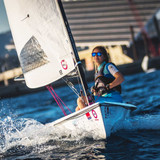
- Qty in Cart
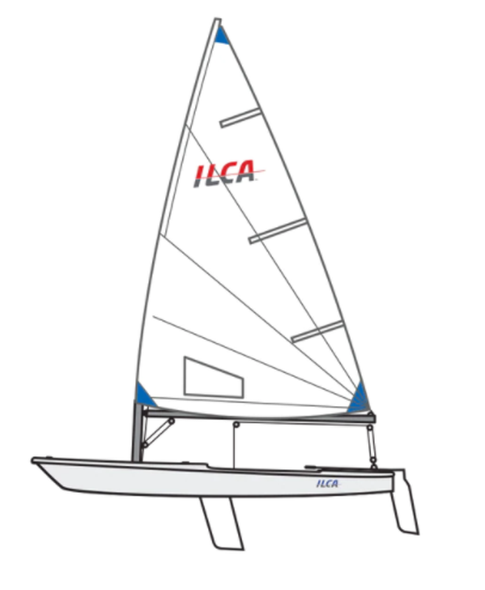
Ovington ILCA - Race

Zim ILCA - Club

RS Venture Connect

- Total: items /
- Add all to cart
Adding your products to cart
Subscribe to our newsletter.
Sign up for our newsletter to receive exclusive discounts, new product announcements, and upcoming sales.
- Articles and Guides
Small Sailboat Types: A Guide to Choosing the Perfect Vessel
9th mar 2023 by toi williams.

Learning how to sail can lead to years of fun and adventure, and having the right sailboat can make your experiences on the water even more enjoyable. Small sailboats have increased in popularity over the last few decades as more people have taken up sailing as a hobby, and today, many types of small sailboats are available for various types of activities.
So, what small sailboat types could be right for you?
Types of Small Sailboats
The term "small sailboats" encompasses a wide range of sailboat models. Generally, if a boat is less than 25 feet long and has a mast, rudder, and sail, it is considered a small sailboat. Various types of small sailboats have different characteristics that make them better for certain types of sailing. Here are some of the most popular small sailboat types.

Sailing dinghies
Sailing dinghies are frequently chosen because they are light and responsive. They are usually rigged with one mast and one sail, making them easy to handle, and they have a shallow draft, allowing them to be used almost anywhere. Sailing dinghies are also some of the least expensive sailboats because they tend to be simple with few features.
Laser – Laser sailing dinghies are nearly 14 feet long and weigh about 130 pounds, making them easy to maneuver and transport.
Beetle Cat - Beetle Cat sailing dinghies are roughly 12 feet long and have a draft of 2 feet, which makes them great for coastal cruising.
Sunfish - The Sunfish has a simple 14-foot setup and is ideal for those who want to learn how to sail.
Catalina 16.5 - The Catalina 16.5 is slightly over 17 feet long and can draft as low as 5 inches on the water.
RS Venture – The Venture model from RS Sailing is 16 feet long and is often used in training classes for those new to sailing.
RS Aero – The Aero model from RS Sailing is nearly 14 feet long and is known for its speed, making it popular with experienced racers.
Topaz Taz – At slightly under 10 feet in length, the Topaz Taz is one of the smallest sailing dinghies currently available.

Topaz Taz. Photo credit: Topper Saliboats
Daysailer is a broad categorization of small sailboat types based on usage and size. Daysailers, also known as dayboats, are larger than sailing dinghies and are available with or without sleeping accommodations. At Rightboat, we list a large selection of daysailers in a wide variety of styles.
Marblehead 22 – The Marblehead 22 is a daysailer with a cockpit that is nearly 12 feet long. It has plenty of room to seat several people.
Catalina 22 Sport – The Catalina 22 Sport daysailer is nearly 22 feet long, can sleep four people, and has a retractable keel for a draft of less than two feet.
Cape Cod Daysailer – This 16-foot sailboat is one of the most affordable models for its size and has enough room to seat several people comfortably.
West Wight Potter P19 – The P19 model from West Wight Potter is just under 20 feet long and comes with four berths, a galley, a sink, and a stove.
Sun Cat – This daysailer from Com-Pac Yachts is nearly 18 feet long and has twin 6-foot berths as well as a handful of other useful amenities.

Photo credit: Zurn
Small sloops
Small sloop is another popular category of small sailboat types. These sailboats are easy to maintain and easy to learn to control and maneuver. They are characterized by a single-mast rig, which typically has a triangular mainsail and a headsail. Small sloops can usually be sailed with one to four people aboard and can be used for all types of sailing in different conditions.
Montgomery 17 – This small sloop has a length of roughly 17 feet and a retractable centerboard keel that can make the boat draft just 2 feet.
Super Snark - The Super Snark is 11 feet long and weighs just 50 pounds with a payload capacity of about 310 pounds.
Flying Scot - At just under 20 feet in length, the Flying Scot is one of the larger small sailboats, allowing it to comfortably seat up to eight people.
BayRaider - The BayRaider is nearly 20 feet long with most of that space occupied by an open cockpit.
Small catamarans
Small catamarans are a good choice for sailors who want some extra stability on the water. These sailboats have two hulls that create a wide and stable base and can be rigged with one or two sails. Small catamarans are often used for cruising, fishing, and racing.
Hobie 16 - The Hobie 16 is slightly less than 17 feet long and is known for being fast, making it very popular with speed-loving sailors.
Minicat - Minicat has developed a line of inflatable catamarans with multi-piece masts that are available in various sizes.
More information: Buying A Sailing Catamaran

Photo credit: Hobie
Advantages of Small Sailboats
There are many reasons why you might prefer one of the small sailboat types over a larger model. Here are some of the most common reasons for choosing small sailboats.
Small sailboats are easy to sail
Small sailboats are often easier to sail because their rigging and steering are simpler. Small sailboats also react quicker to wind shifts, putting sailors more in tune with their surroundings.
Small sailboats are more affordable
The simplicity of small sailboats means you won't be paying a higher price for a bunch of features you don't need. If you choose to buy a certified used sailboat from our experts at Rightboat, you can save even more.
Small sailboats are easier to maintain
Maintenance needs for a small sailboat can be considerably less than what is necessary for their larger counterparts, saving you a significant amount of money over the life of your boat. The model and brand you choose are the biggest factors determining how easy it will be to maintain the boat.

Disadvantages of small sailboats
While there are a lot of things to like about small sailboats, they can also present some challenges in different types of sailing conditions. Here are some reasons why a smaller sailboat may not be the best choice for you.
Small sailboats sail slower
The smaller sails and hull of these types of sailboats make them go slower in the water when compared to larger sailboats. Unless a small sailboat is specifically designed for racing, do not expect it to travel very fast offshore.
Small sailboats have less space
While space is limited on all types of boats, this is especially noticeable with a small sailboat. This lack of space can make it difficult to plan extended trips without frequent stops to replenish your supplies.
Small sailboats have fewer comforts
Small sailboats are typically designed to be simple to launch and operate, so many of the comforts found on larger sailboats are absent on smaller models. In many cases, small sailboats do not have much seating and lack a galley for food preparation or a berth for sleeping.
Many factors go into choosing the right type of boat for your needs. While small sailboats are effective for a variety of purposes, they can present some challenges in certain conditions. At Rightboat, you can find the best boat for your sailing goals and your budget.
For more information check out our guide:
What are the Different Types of Sailboats?
Choosing the Best Beginner Sailboat
Written By: Toi Williams
More from: Toi Williams
Related Articles and Guides
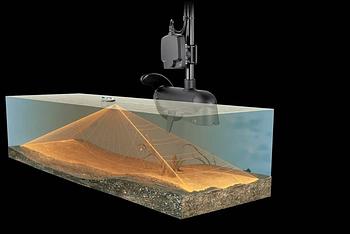
26th Apr 2024
The Best Real-Time Imaging Sonar for Fishing-Finding
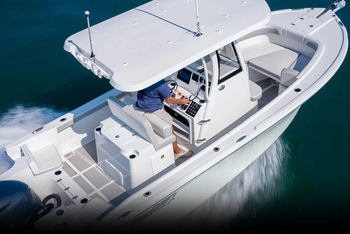
14th Apr 2024
Best Small Center Console Boats Under 25 Feet
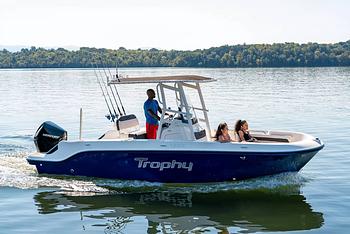
7th Apr 2024
Best Cheap Fishing Boat Brands, Affordable to Cheapest of All
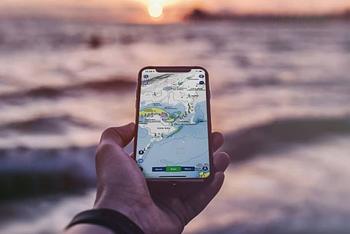
30th Mar 2024
Best Boat Navigation Apps for Smartphones
- Explore Rightboat
- Boats for Sale
- Boating Articles
- Buyers Guide
- About RightBoat
- Sell Your Boat
- Boat Selling Advice
- All manufacturers
- All categories
Enter your email to keep up to date with the latest news
Join for free
Sign up now for free and discover how easy it is to keep up to date with THE latest boats for sale. Find your right boat, and tailor your voyage to finding your next boat.
Benefits of becoming a member:
- Set up tailored alerts
- Personalise your experience
- Download full specifications and broker details
- Keep tabs on your favourite boats
Are you a broker? Join as a Broker
Rightboat - join for free.
Do you have an account already? Login
Save this search
Save your search and receive new boats in your email..
You can unsubscribe from your alerts whenever you like. By pressing the button you accept the Legal Terms and conditions
Learn How to Sail a Small Sailboat
One of the most important things to remember, when learning to sail, is to always know where the wind is coming from in relation to the boat. Study the illustrations included to learn the terms for the primary points of sail, which is the position of the boat relative to wind direction.
The Points of Sail
Tom Lochhaas
The wind is blowing straight down from the top in this illustration. All the arrows pointing outward from the circle are directions a sailboat can sail. For example:
- A sailboat cannot sail directly into the wind but can sail about 45 degrees toward it; this is called being close hauled.
- When the boat is sailing across the wind, with the wind coming directly from either side (the “beam”), the boat is on a beam reach.
- When the boat is sailing at a broad angle off the wind, but not directly downwind, the boat is on a broad reach.
- When the boat is sailing directly downwind, it is said to be running.
Boat Positioning
Knowing how your boat is positioned relative to wind direction is crucial for how you set the sails and how you position your body weight. A good way to learn to pay attention to the wind is to tie short pieces of light yarn to the boat’s shrouds and keep an eye on which way they are blowing.
Wind Direction
When you are sailing, you will find that the motion of the boat affects wind direction, because the boat’s movement through the air creates its own wind. For example, the true wind may be blowing exactly across the boat (beam reach) when the boat is at rest. As it picks up speed, however, it makes its own wind by moving forward through the air.
This added wind from the front adds to the wind over the side to produce a combined wind at an angle more from ahead. Thus, the boat may actually be close hauled. When you first start sailing, you don’t have to think too much about the difference between true wind and apparent wind. All that matters is the resulting (apparent) wind over the boat and sails.
Getting Underway
Konstantin Trubavin/Getty Images
The easiest way to learn to sail a boat is from a mooring or a permanent anchor line in the water. The wind will blow the boat straight back, such that the bow faces into the wind. This is the one direction in which we can’t sail, so the boat has to be turned so that the wind is coming across the boat from either side.
Turn the Sailboat
To turn the sailboat after it is released from the mooring line, simply push the boom out to either side. The wind will now blow against the back of the sail, rather than past it on both sides, and the boat will rotate. This is called “backing the sail.” Now the boat can begin to sail as you pull in the mainsheet to tighten the mainsail.
Sailing Off a Dock or Beach
It is a little more difficult to learn to sail off a dock or beach. If the boat is being blown sideways against the dock, it can be almost impossible to get started. In this case, walk the boat to the end of the dock and turn it there to face outward into the wind. Then you can back the sail to get started.
The boat can’t move if the sails are loose and flapping in the wind. As soon as they are tightened up when the wind is coming from the side, the boat will begin to move forward.
Basics of Steering
As soon as the sails are drawing and the boat is beginning to move, be sure you are sitting on the side of the boat the wind is coming over, opposite of the sails as shown here. The wind against the sails will make the boat heel or lean over, and your weight is needed on the high side to keep the boat from capsizing.
Steer With the Tiller
As soon as the boat is moving, water is streaming past the rudder and the boat can be steered with the tiller. If you have ever used an outboard motor on a small boat to steer by pushing the motor's tiller arm, then you already know how to steer a small sailboat, since the tiller works the same way.
If you have never steered with a tiller before, it takes a bit to get used to, because it seems to work the opposite of what you might expect. To turn the boat to the left (port), you move the tiller to the right (starboard). To turn the boat to starboard, you move the tiller to port.
Steps to Move the Tiller
Look at how the rudder is hinged to the stern of the boat. Moving the tiller one direction rotates the rudder to the other side and water moving against the rudder pushes the stern of the boat the other direction. Use the illustration provided and think through these steps to better understand:
- Move the tiller toward the port (left) side, as this sailor is doing.
- This swings the rudder out a little on the starboard (right) side.
- The water against the rudder's starboard side causes a pushing motion that moves the stern the other direction, to port.
- Moving the stern to the port means the bow now points more to starboard. Steering by moving the stern is very different from steering a car, where the front wheels turn the front of the car. A boat steers by pushing the stern one way or the other like driving a car in reverse.
- Make very small movements of the tiller until you get a feel for steering.
General Sail Handling
The sheets pull in and let out the sails. Pulling the mainsheet brings the mainsail closer to the centerline of the boat. Pulling the jibsheet brings the jib closer to the centerline.
Position the Tiller
Once the boat starts moving forward, position the tiller so that the boat is not turning to either side. If the sails are loose and flapping, pull in the mainsheet just until the mainsail stops flapping and takes shape; you will feel the boat speed up. After this, pull in the jib sheet until the jib also stops flapping.
Navigate the Sails
There is one simple general principle for where to position your sails. The closer you sail toward the wind (close hauled), the more you pull in the sails. The farther you sail off the wind (broad reach), the more you let out the sails.
Note the photo on the left which shows the sails far out to the side as the boat sails downwind. The wind here is blowing from right to left. The photo at right shows the sails brought in close as the boat sails upwind. Notice the boat heels over more the closer it sails into the wind.
Trim the Mainsail
Adjusting the sails using the sheets is called trimming. You trim a sail to give it the best shape for the direction you are sailing relative to the wind.
Trimming the Mainsail
The leading, vertical edge of the sail is called the luff. When a sail is trimmed perfectly, it is in tight enough that the luff is not shaking or flapping, but not so tight that the wind is simply blowing against one side, making the boat heel over excessively. If the sail is brought in almost tight enough, it will look good at the back edge but the luff will be shaking or not tight.
Examine this photo carefully and you’ll see the billowing back of the mainsail luff, which is more noticeable in the blue area of the sail. It does not have a smooth airplane wing shape near the luff. The movement or shaking of the luff that happens when the sail is not quite in tight enough is called luffing. Luffing means the sail is not working as efficiently as it should, and the boat is going slower than it can.
Let Out the Mainsheet
The general principle for trimming the mainsail perfectly is to let out the mainsheet until the mainsail begins to luff and then pull it in just until it stops luffing.
If a sail is in too tight , it can look perfect. You can’t tell by its appearance if it is in too tight. The only way to know is to let it out until it starts luffing and then tighten it just until it stops luffing.
Trim the Jib
Let out the sheet until its luff starts shaking or flapping, then tighten the jibsheet until it stops. As with the mainsail, you can’t tell by the look of the jib whether it’s in too tight, so the only way to make sure it’s perfect is to let out until it luffs, then bring it back in a little.
How to Trim a Jib
Some sailboats, especially larger ones, have streamers on the luff of the jib that show the airflow on both sides of the jib’s front edge. When the sail is in trim, these streamers, called telltales, blow back straight on both sides of the sail. Here is a view of what jib telltales look like and how to trim a jib using them.
Note the shape of both sails in this photo as the boat moves on a beam reach. Remember that closer to the wind, the sails are in tight; the farther off the wind, the sails are let out more. A beam reach is about halfway between the two extremes. Both sails have the same curve.
The space between the jib and the mainsail, called the slot, has even spacing from the front to the back, helping the air flow smoothly between the sails. If the jib was in too tight, or the mainsail out too loose, the narrowing slot would cause air turbulence and slow down the boat.
Making a Turn
The most important thing about handling a sailboat is always knowing where the wind is. If you’re not paying attention and you turn the wrong way without preparing first, you could capsize the boat if it's windy.
Three General Turns
Consider that there are three general types of turns, depending on the boat’s direction relative to the wind:
- If the wind is coming from ahead of you on one side, such as port or left, and you turn the boat left into and across the wind so that now the wind is coming from ahead of you on the other wide, now the starboard or right, this is called tacking– turning across the wind by the turning into the wind.
- If you are sailing on a broad reach with the wind behind you on one side (for example, port or starboard) and you turn the boat right so that the stern crosses the wind, and now the wind is coming from behind you on the other side, now the starboard or right is called gybing (or jibing)– turning across the wind downwind.
- In the third type of turn, you do not cross the wind’s direction at all. For example, you may be close-hauled with the wind coming from ahead of you on one side (for example, port or left) and you turn right (“bear off” the wind) about 90 degrees. The wind is still on your port side except now you are on a broad reach with the wind behind you on the port side.
Positioning the Sails
In the first two of these turns, going across the wind, the sails have to cross to the other side of the boat and you have to switch sides yourself to keep the boat balanced. The easiest kind of turn happens when you keep the wind on the same side of the boat–the third type above. All you have to do is make your turn and then trim your sails to your new course. As you gain experience, you can adjust your sails at the same time you make the turn.
The closer you are to the wind (if you “head up” toward the wind), the more you pull in the sheets. The farther you are off the wind (if you “bear off”), the more you left out the sheets. When you prepare to turn either way, always keep one hand on your mainsheet. You may need to let it out quickly when you turn downwind, for example, to prevent being blown over sideways.
Using the Centerboard
The centerboard is a long, thin blade of fiberglass or metal that hangs down in the water near the center of the boat. It is usually hinged on one end and can be raised and lowered while sailing. The photo at left shows the top of the centerboard in the cockpit, with the board in the down position. In the photo to the right, you can see the board in the water beneath the boat.
Sailing Downwind
Because the wind blows sideways against the boat and sails, especially the closer the boat sails toward the wind, the boat is blown sideways even as it moves forward. When the centerboard is down, it is like a keel on a large sailboat and resists this sideways motion. When you are sailing downwind, however, the wind is behind more than to the side and there much less sideways push, so the centerboard is not needed. Many sailors, therefore, raise the centerboard when going downwind; with less drag in the water, the boat sails faster.
When you’re first learning, it doesn’t hurt to leave the centerboard down the whole time. It’s one less thing to be concerned about until you’ve mastered sail trim.
Slowing a Sailboat
For most sailors, the goal is to sail as fast as possible, whether racing or just having fun. You need to know how to slow the boat down sometimes, such as when approaching a dock or mooring or an obstruction.
Slowing a sailboat is fairly simple- you just do the opposite of what you do to sail fast with well-trimmed sails. The best way to slow down is to "spill wind" from your sails by letting out the sheets until the sails are luffing, or even further if needed until they start flapping. This means they're not working efficiently to drive the boat forward and the boat will quickly slow down. You need only to tighten up the sheets again to regain speed if you want or continue to let the sheets out until the sails flap uselessly and the boat coasts to a stop.
There is one exception to the "let out to slow" rule: when you're sailing down wind. When you are running, the sail billows forward, and it may not be possible to let the mainsail out far enough to spill wind because the boom hits the shrouds and won't go any father. The sail is still full and the boat moving right along. In this case, pull the mainsheet way in to slow the boat. The less sail is thus exposed to the wind, and the boat slows down.
Let Out the Sheets
Do not try to slow down on other points of sail by tightening the mainsheet. On a beam reach, for example, tightening the sheets may slow you but can also drastically increase the boat's heeling, and you could capsize. Instead, let out the sheets.
Stopping a Sailboat
Eventually, you need to stop the boat to dock or moor it after sailing. This may not be immediately intuitive as boats do not have brakes like cars.
Turn Toward the Wind
It is usually as simple as turning the boat directly into the wind to stop it, as shown in this photo. Depending on how hard the wind is blowing and how fast the boat is moving, this generally will stop the boat in one to three boat-lengths.
- The sails flutter loose and do not fill to move the boat. To stop to pick up a mooring line, or to stop beside a dock, practice turning the boat into the wind to see how quickly it stops in different conditions.
- Remember to loosen the sheets also, because the boat will eventually be blown one way or the other, and if the sails catch the wind, it will want to go sailing off again.
In Emergencies
You can stop or slow a sailboat simply by releasing the sheets. The sails will flap and make an uproar, but the boat will slow and stop– that is unless the wind gets behind the mainsail and pushes the boom against the shrouds, allowing the boat to keep going downwind. That’s why it’s always best to turn into the wind to stop the boat.
Stop on a Dock
Plan your approach carefully so that you can turn into the wind, regardless of where it is coming from, or can loosen the sheets to coast to a stop. If the wind is blowing directly against the dock, for example, you can sail alongside at a close angle and let the sheets out to slow the boat and coast up, as the wind blows you onto the dock.
Putting the Boat Away
After sailing, back on the mooring or dock, you will remove the sails and possibly the rudder and other gear.
- To protect the sails, they should be carefully folded before being stowed.
- Let them dry first if they are wet. If they have been doused in salt water, rinse them first and let them dry.
Fold a Sail
The best way to fold a sail depends on its size and the size of the sail bag if used. The fewer folds, the less strain on the sail cloth.
- Spread the sail flat and then fold it twice or more lengthwise, keeping the luff straight.
- When the width of the folded sail is small enough for stowing and handling, roll it up into a cylinder.
- Stow the sails and other gear in a dry place, to be ready for the next sailing day.
Learn the Parts of a Sailboat and How to Communicate Them
Owner's Review of the MacGregor 26 Sailboat Models
How to Rig Your Small Sailboat and Prepare to Sail
The 8 Best Car Sunshades of 2024
Heavy Weather Sailing
The 9 Best Kayak Roof Racks of 2024
Buying a Sailboat: Sloop vs. Ketch
A Beginner's Guide to Sailing a Sailboat
The 9 Best UV Umbrellas of 2024
The 8 Best Luggage Sets of 2024, Tested and Reviewed
The 11 Best Beach Blankets of 2024
The Various Types of Sailboats and Rigs
The 9 Best Car Phone Mounts of 2024, Tested and Reviewed
The 11 Best Men’s Water Shoes of 2024, Tested and Reviewed
The 12 Best Carry-On Luggage of 2024, Tested and Reviewed
Review of the O'Day Mariner 19 Sailboat
Learn How to Sail a Small Sailboat – 1. The Parts of the Boat
- Snowboarding
- Scuba Diving & Snorkeling
Typical Small Sailboat
The Hunter 140 shown here is a typical centerboard sailboat used for learning how to sail and for sailing in protected waters. It can hold two adults or three children. It is easily rigged and sailed. We will use this boat throughout this Learn to Sail - Full Course.
Shown here is the boat as it is typically left on a dock or mooring, with sails and rudder removed.
If you know very little about sailing, you might want to learn some basic terms referring to the boat and sailing technique before starting this course.
The mast and boom are usually left in place on the boat. The forestay holds up the mast from the bow of the boat, and a single shroud on each side of the boat holds the mast side to side. The shrouds are mounted back of the mast, so they also keep the mast from falling forward. The stay and shrouds are made of flexible wire that can be disconnected to trailer or store the boat.
On most large sailboats, there are multiple shrouds to support the mast, along with a back stay support to the stern. Otherwise, this boat is representative of the basic standing rigging of a sloop, the most common type of modern sailboat.
The Mast Step
Here’s a close-up view of the bottom of the mast atop the boat. The stainless steel mounting piece affixed to the boat is called the mast step. In this boat model, a pin emerging from the mast on both sides simply fits into a slot in the mast step. The mast is lightweight and easily raised by hand.
Once the mast is stepped, it is held securely in place by the shrouds and forestay, as shown in the previous photo.
On most small sailboats, the rudder is mounted on the stern of the hull, as shown here. The rudder is a long, thin blade hanging vertically from a simple set of hinges (which varies somewhat among different boats). The rudder pivots on a vertical axis, swinging side to side, which turns the boat when it is moving through the water. (We’ll describe steering in Part 3 of this course.)
The rudder may be stored on the boat or removed, like the sails, after sailing. Here, the rudder is being reinstalled. On this model the rudder has a kick-up feature, which allows it to swing up if the boat strikes bottom.
The rudder is turned side to side by the tiller, the long metal arm seen here extending from the top of the rudder about 3 feet into the cockpit. On many boats the tiller is made of wood.
Note the black handle on top of the metal tiller arm. Called a tiller extension, this device mounts near the end of the tiller and can be moved far out to the side of the boat or forward. The extension is needed because when sailing close to the wind, sailors may need to move their body weight far out to the side (called “hiking out”) in order to keep the boat balanced. We’ll see this in Part 3 of this course.)
Most large sailboats use a wheel apparatus to turn the rudder, because the forces on the boat’s rudder can be so much larger that it would be difficult to steer with a tiller.
Boom Gooseneck
The boom attaches to the mast with a fitting called a gooseneck. The gooseneck allows the boom to swing far out to both sides as well as to pivot up and down.
This photo also shows the vertical slot in the mast used to hold the mainsail's front edge (the "luff") to the mast (as you’ll see in Part 2 of this course). The sail “slugs,” fittings on the sail's luff, slide up the mast in this slot.
A similar slot can be seen in the top of the boom, to hold the foot of the sail.
The L-shaped metal pin at the forward end of the boom holds the forward bottom corner of the mainsail, called the tack.
Note the two lines (never called “rope” on a boat!) running up the mast. These are the halyards, described in the next page.
The Halyards
Halyards are the lines that pull the sails up the mast. A typical small sloop like this sailboat has two sails, the mainsail and jib, and thus has two halyards – one to pull up the top corner ("head") of each sail. (We’ll see this is Part 2 of this course.)
At the end of a halyard is a fitting, called a shackle, that attaches the sail to the line. The line then runs up to a block (pulley) at the masthead, and comes back down alongside the mast as you see here. Pulling down on this end of the halyard hoists the sail up.
When the sail is up, the halyard is tied off tight to the mast cleat using a cleat hitch, as shown here.
Halyards are part of the boat’s running rigging. "Running rigging" refers to all the lines that control the sails or other rigging, which can be moved or adjusted while sailing - unlike the fixed rigging, the usually metal, fixed parts of the rig (mast, boom, stays, shrouds).
Mainsheet Block and Tackle
Another key part of a boat’s running rigging is the mainsheet. This line runs between the boom and a fixed point in the cockpit (as shown here) or cabin top. As the line is let out, the boom and mainsail can swing farther out from the boat’s centerline. As described in Part 3 of this course, moving the sails in or out, called trimming the sails, is necessary for sailing at different angles to the wind.
Even in a small sailboat the force of the wind in the mainsail can be considerable. The use of a block and tackle in the mainsheet provides a mechanical advantage so that the mainsail can be managed by one person, with one hand, while sailing.
On most larger sailboats, the mainsheet mounts from the boom to a traveler rather than to a fixed point. The traveler can move the attachment point side to side for better sail shape.
Finally, notice the cam cleat where the mainsheet exits the block and tackle. This cleat holds the mainsheet in place after being adjusted.
Jibsheet and Cleat
When the jib sail is put on the forestay (“bent on”), a sheet is run from its aft corner (the “clew”) on each side of the mast back to the cockpit. The jib sheets allow the sailor to trim the jib, as described in Part 3 of this course.
Each jib sheet is led back through a cam cleat, as shown here, which holds the line in place. The jaws of the cam cleat allow the line to be pulled back but not slip forward. To release the jib sheet, the sailor jerks the line up and out of the jaws (into the open space below the top red piece shown).
The Centerboard
The final part we’ll look at in this boat introduction is the centerboard. You can’t actually see most of the centerboard, however, because it is in the water below the boat. This photo shows only its top edge protruding from the centerboard trunk down the middle of the cockpit.
The centerboard is a long, thin blade mounted at one end on a pivot point. When its control line is let out, the centerboard swings down into the water – usually about 3 feet down on a boat of this size. The thin board slices cleanly through the water as the boat moves forward, but its large flat side provides resistance to prevent the wind from blowing the boat sideways. In Part 3 of this course we’ll discuss how the centerboard is used while sailing.
Note the centerboard control line running back on the right side of the centerboard trunk. The cleat that holds the line and keeps it from moving forward is called a clam cleat because of its shape. With no moving parts, this cleat holds a line squeezed into it. It is not as secure as the cam cleat for the mainsheet and jibsheets, but the force on the centerboard line is much less.
This completes our introduction of the basic parts of a small sailboat.
- How to Gybe a Sailboat
- How to Raise the Mainsail
- How to Tack a Sailboat
- Simple Reefing System for Sailors
- How to Rig a Preventer Line
- How to Use a Mainsheet Traveler
- Using a Sailboat Boom Vang in Sailing
- How to Use a Sailboat's Outhaul
- Control Your Tiller Without a Tiller-Tamer
- The Sunfish: A Perfect Lake or Urban Sailboat
- How to Heave To a Sailboat
- How to Use Roller Furling
- How to Use a Topping Lift
- When to Adjust Sailboat Sails for Stronger Winds
- Choosing a Centerboard or Fixed Keel Sailboat
- How to Trim the Jib Using Telltales

IMAGES
VIDEO
COMMENTS
Catalina 16.5. jlodrummer. Catalina Yachts are synonymous with bigger boats but they have some great and smaller boats too such as Catalina 16.5. This is one of the best small sailboats that are ideal for family outings given that it has a big and roomy cockpit, as well as a large storage locker.
Its enduring popularity, strong class association, and supportive community make it a beloved classic in the world of small sailboats, embodying a perfect blend of performance, comfort, and inclusivity for sailors of all levels. 8. Hobie Cat. Start a fun hobby with the Hobbie Cat. Length: 16.7ft / 5.04 m.
If you want a personal sailboat ideal for solo sailing, the Sun Can is a great choice. Belowdecks, the twin 6-foot-5-inch berths and many other features and amenities make this cat a willing weekender. $19,800, (727) 443-4408, com-pacyachts.com.
Rigged with one or two sails, small cats are tiller steered and usually have a trampoline that the students sit on and sail. Rotomolded Boats. Small rotomolded boats are very forgiving due to their durable construction. Unlike fiberglass or wooden boats, rotomolded (a type of plastic construction technique) trainers can bounce off docks or ...
A small sailboat may allow you to fulfill your dream of being a boat owner without going broke. More Options Available - Another nice thing about small sailboats is that there are a ton of different options available. I list over 100 down below along with their size, and an estimate of the purchase cost.
In fact, small sailboats allow a delightful back-to-basics experience that often gets lost on larger, systems-heavy sailboats. On a small sailboat you can connect with the sea, feeling the boat move beneath you. The boat is typically easy to rig, simple to sail, and can even be sailed solo. Small sailboats give you the freedom to trailer your ...
Learning how to sail a small sailboat requires onshore and offshore activities. Sailing heavily depends on the wind, and setting the sails right is a crucial sailing element. If you do not adjust the sails according to the wind, your boat will not move and, in worst cases, may even capsize. Sailing is a skill that gets better with practice.
The best budget small cruiser sailboats include the Catalina 22 for its versatility, Hunter 27 for durability, Beneteau First 20 for performance, West Wight Potter 19 for compactness, Compac Sun Cat for ease of use, MacGregor 26 for adaptability, and Jeanneau Sun Odyssey 349 for comfort and style. As a seasoned sailor with years of navigating ...
Maintenance, Upkeep, and Sailing Techniques. Owning a small sailboat is a commitment to its care. Regular maintenance is essential to ensure the longevity and safety of your vessel. This includes seasonal preparations like winterization and routine checks for wear and tear. Moreover, mastering sailing techniques specific to small boats is crucial.
Vancouver 28. Photo credit: YachtFathom.co.uk. A sensible small boat with a "go-anywhere" attitude, this pocket cruiser was designed with ocean sailors in mind. One of the best cruising sailboats under 40 feet, the Vancouver 28 is great sailing in a small package. Hull Type:Full keel with transom hung rudder.
Here are my top three picks of best small sailboat for beginners: Sunfish. Hunter 15. Catalina 16.5. If I had to pick one, I would go for Hunter 15 sailboat because it has the the best safety features. The Hunter 15 sailboat is also easy to operate, plus you can dock with no problem.
Catalina 22. If you're looking for the minivan of small sailboats—functional, family-friendly, and reliable—the Catalina 22 is for you. Ideal for weekend trips with the family, this boat offers a cabin for shelter, a cooking space, and even a small toilet. It's a floating home away from home.
The Catalina 16.5 sits right in the middle of Catalina Yachts' line of small sailboats, which range from the 12.5 to the 22 Capri and Sport, and it comes in both an easy-to-trailer centerboard model and a shoal-draft fixed-keel configuration. www.catalinayachts.com. With the fiberglass board up, the 17-foot-2-inch boat draws just 5 inches of ...
Lido 14. Barney Lehman and W.D. Schock designed the Lido 14. It is an American sailing dinghy that was built in 1958 for the very first time. In essence, the Lido 14 is a classic sailboat that proves to be a perfect pick to suit small boats, especially for the owners who are still learning the ropes of boating.
Twenty Small Sailboats to Take You Anywhere. John Vigor turns the spotlight on twenty seaworthy sailboats that are at home on the ocean in all weather. These are old fiberglass boats, mostly of traditional design and strong construction. All are small, from 20 feet to 32 feet overall, but all have crossed oceans, and all are cheap.
The fastest and most compact small sailboat ever built. Foldable design, handmade in France. The Reverso Air is among the fastest small sailboats in the world. Carbon, membrane & foldable design. The ideal companion to enjoy the water. The ideal sailboat that fits both family & performance sailing.
Assent 's performance in the 1979 Fastnet Race makes the Contessa 32 a worth entry in the 25 best small sailing boat designs list. Credit: Nic Compton. Designed by David Sadler as a bigger alternative to the popular Contessa 26, the Contessa 32 was built by Jeremy Rogers in Lymington from 1970. The yacht's credentials were established when ...
The jib sail is positioned while sailing by using the jibsheets. The jib sheets are two lines that come back to the cockpit, one on each side of the boat, from the aft lower corner of the sail (the "clew"). In most small sailboats, the jib sheets are left tied to the sail's clew and stay with the sail.
Small sailboats are generally under 20 feet in length, come in a variety of designs, and have different hulls. These include monohulls, catamarans, and trimarans. As long as they have a mast, rudder, sail, and are under 20 feet, it is considered a small sailboat. According to experienced sailors that use a smaller boat, it is best to have one ...
Backed by 15 Years of Industry Experience. West Coast Sailing was founded in 2005 with one vision: to be the leading resource for products, services, and information in the small sailboat industry. Over the past 15 years we've worked with thousands of sailors around the world, outfitting individual sailors, families, programs, and sailing ...
Types of Small Sailboats. The term "small sailboats" encompasses a wide range of sailboat models. Generally, if a boat is less than 25 feet long and has a mast, rudder, and sail, it is considered a small sailboat. Various types of small sailboats have different characteristics that make them better for certain types of sailing.
The easiest way to learn to sail a boat is from a mooring or a permanent anchor line in the water. The wind will blow the boat straight back, such that the bow faces into the wind. This is the one direction in which we can't sail, so the boat has to be turned so that the wind is coming across the boat from either side.
A typical small sloop like this sailboat has two sails, the mainsail and jib, and thus has two halyards - one to pull up the top corner ("head") of each sail. (We'll see this is Part 2 of this course.) At the end of a halyard is a fitting, called a shackle, that attaches the sail to the line.
3. Stability: Sailboats: Monohulls can heel (lean) while sailing, which some sailors enjoy for the thrill but can be discomforting for others. Catamarans: Greater stability due to the dual hulls ...